

Zitierweise / cite as:
Payer, Alois <1944 - >: Chronik Thailands = กาลานุกรมสยามประเทศไทย. -- Chronik 1981 / B. E. 2524. -- Fassung vom 2017-03-18. -- URL: http://www.payer.de/thailandchronik/chronik1981.htm
Erstmals publiziert: 2012-10-07
Überarbeitungen: 2017-03-18 [Ergänzungen] ; 2016-12-19 [Ergänzungen] ; 2016-11-29 [Ergänzungen] ; 2016-05-28 [Ergänzungen] ; 2016-05-12 [Ergänzungen] ; 2016-03-22 [Ergänzungen] ; 2015-08-26 [Ergänzungen] ; 2015-08-16 [Ergänzungen] ; 2015-06-07 [Ergänzungen] ; 2015-03-04 [Ergänzungen] ; 2014-10-29 [Ergänzungen] ; 2014-10-08 [Ergänzungen] ; 2014-09-25 [Ergänzungen] ; 2014-08-25 [Ergänzungen] ; 2014-04-07 [Ergänzungen] ; 2013-11-07 [Ergänzungen] ; 2013-10-27 [Ergänzungen] ; 2013-10-21 [Ergänzungen] ; 2013-10-01 [Ergänzungen] ; 2013-06-28 [Ergänzungen] ; 2013-06-11 [Ergänzungen] ; 2013-06-07 [Ergänzungen] ; 2013-05-21 [Ergänzungen] ; 2013-05-03 [Ergänzungen] ; 2013-04-29 [Ergänzungen] ; 2013-04-24 [Ergänzungen] ; 2013-03-30 [Ergänzungen] ; 2013-02-18 [Ergänzungen] ; 2013-02-13 [Ergänzungen] ; 2013-01-27 [Ergänzungen] ; 2013-01-25 [Ergänzungen] ; 2013-01-13 [Ergänzungen]
©opyright: Dieser Text steht der Allgemeinheit zur Verfügung. Eine Verwertung in Publikationen, die über übliche Zitate hinausgeht, bedarf der ausdrücklichen Genehmigung des Herausgebers.
Dieser Text ist Teil der Abteilung
Thailand von
Tüpfli's Global Village Library
ช้างตายทั้งตัวเอาใบบัวปิดไม่มิด
|
Gewidmet meiner lieben Frau Margarete Payer die seit unserem ersten Besuch in Thailand 1974 mit mir die Liebe zu den und die Sorge um die Bewohner Thailands teilt. |
|
Bei thailändischen Statistiken muss man mit allen Fehlerquellen rechnen, die in folgendem Werk beschrieben sind:
Die Statistikdiagramme geben also meistens eher qualitative als korrekte quantitative Beziehungen wieder.
|
Statistische Daten 1981:
|
1976 - 2011
Durchschnittliche Bankzinsen für Privatkredit
Abb.: Durchschnittliche Bankzinsen für einen Privatkredit 1976 - 2011
[Datenquelle: http://www.indexmundi.com/facts/thailand/lending-interest-rate. -- Zugriff am 2014-04-05]
Abb.: Durchschnittliche Bankzinsen auf private Spareinlagen 1977 - 2011
[Datenquelle: http://www.indexmundi.com/facts/thailand/deposit-interest-rate. -- Zugriff am 2014-04-07]
1981
Bildung des Joint Public-Private Consultative Committee (JPPCC)
1981


Die schon 1955 von Silpa Bhirasri (ศิลป์ พีระศรี, aka Corrado Feroci, 1892 - 1962) entworfene Buddhastatue für den 1957 eröffneten Phutthamonthon-Park (พุทธมณฑล) wird in Bronze gegossen und in der Mitte des Parks aufgestellt. Die Statue ist ca. 16 m hoch. König Bhumbol gibt ihr den Namen Phra Si Sakkaya Thotsaphonlayan Prathan Phutthamonthon Suthat (พระศรีศากยะทศพลญาณ ประธานพุทธมณฑลสุทรรศน์; literally 'the Graceful Statue of the Shakyamuni who was of the Tenfold Power, the Presiding Buddha of the Beautiful Phutthamonthon').
Abb.: Lage des Putthamonthon-Park (พุทธมณฑล)
[Bildquelle: OpenStreetMap. -- Creative Commons Lizenz (Namensnennung, share alike)]
Abb.: Phra Si Sakkaya Thotsaphonlayan Prathan Phutthamonthon Suthat (พระศรีศากยะทศพลญาณ ประธานพุทธมณฑลสุทรรศน์), 2006
[Bildquelle: Tevaprapas Makklay / Wikipedia. -- Creative Commons Lizenz (Namensnennung, share alike)]
1977 - 1981
Malaria:
Abb.: Malaria-Erkrankungen (in Tausend) 1977 - 1981
[Datenquelle: Länderbericht Thailand 1993, S. 38]
Abb.: Reste der Bescheinigungen für Malaria-Inspektion, Ayutthaya (อยุธยา), 2008
[Bildquelle: Sakkra Paiboon. -- http://www.flickr.com/photos/ne/2436468925/. -- Zugriff am 2012-02-20. -- Creative Commons Lizenz (Namensnennung, keine kommerzielle Nutzung, keine Bearbeitung)]
Abb.: Lage von Ayutthaya (อยุธยา)
[Bildquelle: OpenStreetMap. -- Creative Commons Lizenz (Namensnennung, share alike)]
1975 - 1992
Einkommensverteilung:
Abb.: Einkommensverteilung in Quintilen der Bevölkerung, 1975 - 1992
[Datenquelle: Bello (1998), S. 37]
1981
Aufhebung des Streikverbots.
1981 - 1991
Lehrer an staatlichen Schulen:
Abb.: Lehrer an staatlichen Schulen (in Tausend), 1981 - 1991
[Datenquelle: Pocket Thailand in figures (1996), S. 42]
Abb.: Verehrung der Lehrer (Wai Khru - พิธีไหว้ครู), Chiang Mai (เชียงใหม่), 2009
[Bildquelle: SEETFL. -- http://www.flickr.com/photos/seetefl/3616510402/. -- Zugriff am 2012-02-01. -- Creative Commons Lizenz (Namensnennung, share alike)]
Abb.: Lage von Chiang Mai (เชียงใหม่)
[Bildquelle: OpenStreetMap. -- Creative Commons Lizenz (Namensnennung, share alike)]
1981

Besuch der Sekundarstufe (มัธยม) von muslimischen bzw. buddhistischen Grundschulabsolventen (ประถม) in den vier malaiisch-muslimischen Südprovinzen.
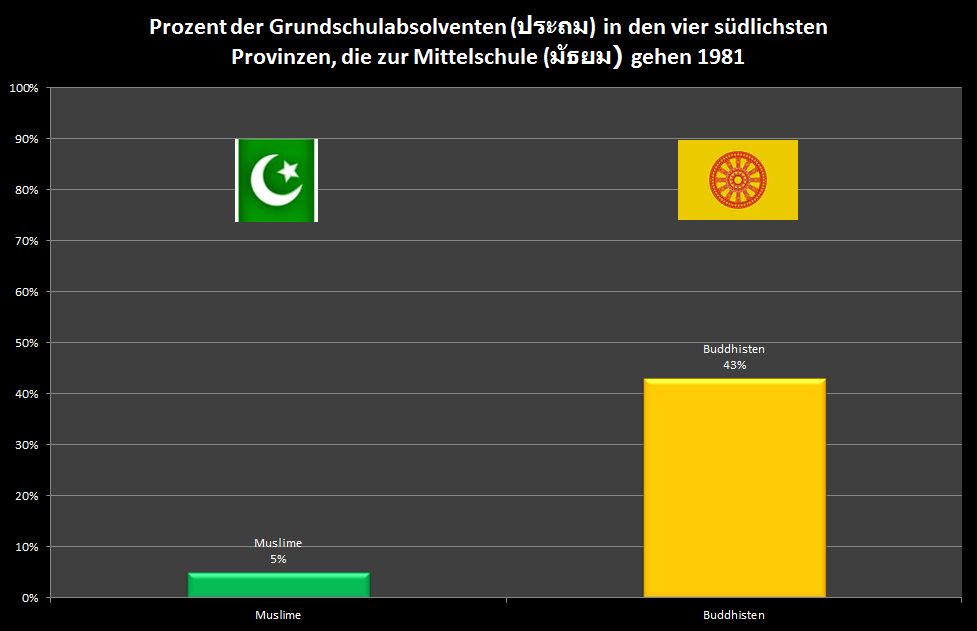
Abb.: Prozent der Grundschulabsolventen (ประถม) in den vier
malaiisch-muslimischen Südprovinzen, die die Sekundarstufe (มัธยม) besuchen,
1981
[Datenquelle: Moore, Jeff M.: The Thai
way of counterinsurgence. -- [o. O.] : [Selbstverlag], 2014-- 446 S. ; 23 cm.
-- (Muir analytics book). -- ISBN 9781497395701. -- S. 200.]
1981 - 1988

Die Bundesrepublik Deutschland fördert den Aufbau des Thai-German Teaching Aid Centre an der an der King Mongkut's University of Technology North Bangkok (KMUTNB) - มหาวิทยาลัยเทคโนโลยีพระจอมเกล้าพระนครเหนือ). Heute: Institute for Technical Education Development (ITED) an der KMUTNB.
1975 - 1985
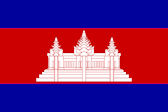
UNHCR-Flüchtlinge aus Kambodscha nach Thailand:
Abb.: Kambodschanische UNHCR-Flüchtlinge nach Thailand (in Tausend) 1975 - 1985
[Datenquelle: http://www.websitesrcg.com/border/border-history-1.html. -- Zugriff am 2013-10-27]
Abb.: UNHCR - UNBRO Flüchtlingslager an der thailändisch-kambodschanischen Grenez
[Bildquelle: UNHCR]
1981
Einführung von Videofilm in Thailand.
1981 - 1998

Deutsche Entwicklungshilfe: Thai-German Highland Development Programme (TG-HDP) (zusammen u. a. mit Office of the Narcotics Control Boards).
Projektgebiete:
- Tambon Wawi (วาวี), Chiang Rai (ab 1982)
- Nam Lang (น้ำลาง), Mae Hong Son (ab 1984)
- Huai Pu Ling (ห้วยปูลิง), Mae Hong Son (ab 1990)
Abb.: Lage der Projektgebiete
[Bildquelle: Development or domestication? : indigenous peoples of Southeast Asia / ed. Don N McCaskill ; Ken Kampe. -- Chiang Mai : Silkworm Books, 1997. -- 631 S. : Ill. ; 21 cm. -- ISBN 974-7100-33-9. -- S. 332]
Abb.: Opiumanbau in den Projektgebieten des Thai-German Highland Development Programme (TG-HDP) 1982 - 1994
[Datenquelle: Hagen Dirksen <1951 - >. -- In: Development or domestication? : indigenous peoples of Southeast Asia / ed. Don N McCaskill ; Ken Kampe. -- Chiang Mai : Silkworm Books, 1997. -- 631 S. : Ill. ; 21 cm. -- ISBN 974-7100-33-9. -- S. 243]
1981 - 1991

Deutsche Entwicklungshilfe: Thai-German Animal Nutrition Project (in Zusammenarbbeit mit Chiang Mai University - มหาวิทยาลัยเชียงใหม่)
1981


Luang Phu Ngon Sorayo (หลวงปู่โง่น โสรโย, ein Magier-Mönch, Bildhauer und Maler, Wat Phra Phutthabat Khao Ruak (วัดพระพุทธบาทเขารวก), Amphoe Thapan Hin (ตะพานหิน), Provinz Phichit (พิจิตร) sagt, die politischen Unruhen Thailands kämen daher, dass die Seele von König Taksin (สมเด็จพระเจ้าตากสินมหาราช, 1734 - 1782) noch keine Ruhestätte gefunden habe. Der Luang Phu will eine Statue für König Taksin in Mönchsrobe herstellen lassen und die Seele des Königs dort hinein bringen. Er bittet um das Patronat des Königs für dieses Vorhaben und erhält es zusammen mit einem finanziellen Beitrag des Königs. Die kleine Skulptur von König Taksin (13 cm hoch) wird vom König zusammen mit Amuletten gesegnet und kommt ins Wat Phavana Phirataram (วัดภาวนาภิรตาราม), Bang Khun Non (บางขุนนนท์), Bangkok Noi (บางกอกน้อย)
Abb.: Luang Phu Ngon Sorayo (หลวงปู่โง่น โสรโย)
Abb.: Lage von Amphoe Thapan Hin (ตะพานหิน)
[Bildquelle: OpenStreetMap. -- Creative Commons Lizenz (Namensnennung, share alike)]
Abb.: Letzte Ruhestätte der Seele König Taksins: Bang Khun Non (บางขุนนนท์)
[Bildquelle: OpenStreetMap. -- Creative Commons Lizenz (Namensnennung, share alike)]
1981
Es erscheint der Bericht über Abtreibungen in Thailand:
Baker, Jean ; Clinton, Jarret: Abortion in Thailand : a review of the literature / Population Council. Regional Office for South and East Asia. -- Bangkok : Regional Office for South and East Asia, Population Council, 1981.
1981

Es erscheint die Broschüre gegen eine Reform des Abtreibungdrechts
ทำแด้ง ... โค้งสุดท้ายแห่งหายนธรรม ["Abtreibung ... die letzte Kurve vor dem Verlust des buddhistischen Dharma"] / hrsg. von der Buddhist Association of Thailand (พุทธสมาคมแห่งประเทศไทย ในพระบรมราชูปถัมภ์)
Das Buch enthält neben blutigen Bildern Abhandlungen von Chamlong Srimuang (จำลอง ศรีเมือง, 1935 - ) und anderen prominenten buddhistischen Laien und Mönchen (teilweise Wiederabdrucke). Es werden 20.000 Exemplare verteilt.
Abb.: Buchrückseite
[Bildquelle: Whittaker, Andrea <1967 - >: Abortion, sin, and the state in Thailand. -- London : RoutledgeCurzon, 2004. -- 189 S. : Ill. ; 25 cm. -- ISBN 041533652X. -- S. 71]
"The problems of abortion all stem from a single source, that people are inflamed with sexual passion [fai rakha]. Indeed lust plays an immense role. However, if sexual desire can be halted or reduced to some extent the problem of abortion will diminish or vanish entirely." "Morality is unselfishness in society. How will morality survive when adults persecute children who can’t fight back? Mothers are coming to accept the idea of killing the child in one’s own womb. [Let’s be clear] that if we allow abortion to be accepted on the basis of a false argument society will most certainly slide into an era of turmoil and upheaval in which people are only concerned with their own self-interest."
[Übersetzt in: Whittaker, Andrea <1967 - >: Abortion, sin, and the state in Thailand. -- London : RoutledgeCurzon, 2004. -- 189 S. : Ill. ; 25 cm. -- ISBN 041533652X. -- S. 73ff.]
1981
Bangkok: Eröffnung des Prasart Museum (พิพิธภัณฑ์ปราสาท). Es ist ein privates Kunstmuseum von Prasart Vongsakul (ปราสาท วงสกุล)
Abb.: Lage des Prasart Museum (พิพิธภัณฑ์ปราสาท)
[Bildquelle: OpenStreetMap. -- Creative Commons Lizenz (Namensnennung, share alike)]
1981
Das Literary Council wählt zum Buch des Jahres: Khamphiphaksa (คำพิพากษา, The Judgment) / von Chart Korbjitti (ชาติ กอบจิตติ, 1954 - ).
Abb.: EinbandtitelEnglische Übersetzung: Chart Korbjitti [ชาติ กอบจิตติ] <1957 - >: The judgement. -- Transl. by Marcel barang and Phongdeit Jiangphattanakit. -- Internet edition [for Kindle]. -- 2009. -- (Thai modern classics). -- ISBN 97 8611 7107 030. -- Originaltitel: คำพิพากษา (1981)
Abb.: Chart Korbjitti (ชาติ กอบจิตติ), 2006
[Bildquelle: Lerdsuwa / Wikipedia. -- Public domain]
"Chart Korbjitti (Thai ชาติ กอบจิตติ, born June 25, 1954 in Samut Sakhon - สมุทรสาคร) is a Thai writer. He first came to prominence with the publication of his novel Khamphiphaksa (คำพิพากษา,The Judgment) in 1981. Named as Book of the Year by Thailand's Literature Council, the book won him the S.E.A. Write Award.[1] He received a second S.E.A. Write Award in 1994 for Wela (Time).[2] He was named a National Artist in Literature in 2004, and was among the honorees of the inaugural Silpathorn Award (รางวัลศิลปาธร), given to Thai contemporary artists.
BiographyChart was born in the Khlong Sunak Hon (คลองสุนัขหอน) area of Samut Sakhon province. In 1969, at the age of 15, he published his first short story, Nak Rian Nak Leng (นักเรียนนักเลง), in a school publication at Wat Pathum Khong Kha School.
His story Phu Phae (ผู้แพ้) won the Cho Karaket short story award (รางวัลช่อการะเกด) in 1979 from Lok Nangsue (โลกหนังสือ) magazine.
He has established himself as a full-time writer, stating, "I choose to be a writer. I give it my whole life. I have traded my whole life for it."
He has founded the publishing house Samnakphim Hon (สำนักพิมพ์หอน, Howling Books), which publishes all of his work.
WorkChart's books, in order of original publication date:
- Thang Chana (ทางชนะ; 1979) novella, ISBN 974-90552-9-2
- Chon Trok (จนตรอก; 1980), novella, ISBN 974-90565-9-0
- Published in English in 2003 as No Way Out, ISBN 974-91385-1-1
- Khamphiphaksa (คำพิพากษา; 1981), novel, ISBN 974-91957-9-5
- Published in English in 1995 as The Judgment, ISBN 974-89330-0-8
- Rueang Thamada (เรื่องธรรมดา; 1983), novella, ISBN 974-93281-4-0
- Mit Pracham Tua (มีดประจำตัว; 1984), collected short stories 1, ISBN 974-93957-4-3
- Ma Nao Loi Nam (หมาเน่าลอยน้ำ; 1987), novella, ISBN 974-211-079-4
- Phan Ma Ba (พันธุ์หมาบ้า; 1988), novel, ISBN 974-92246-3-9
- Published in English in 2002 as Mad Dogs & Co., ISBN 974-90553-5-7
- Nakhon Mai Pen Rai (นครไม่เป็นไร; 1989), collected short stories 2, ISBN 974-90553-2-2
- Wela (เวลา; 1993), novel, ISBN 974-90566-1-2
- Published in English in 2000 as Time, ISBN 974-85827-7-9
Adaptations
- Banthuek: Banthuek Rueang Rao Rai Sara Khong Chiwit (บันทึก: บันทึกเรื่องราวไร้สาระของชีวิต; 1996), essays, ISBN 974-93095-7-X
- Raingan Thueng Phanathan Nayok Ratthamontri (รายงานถึง ฯพณฯ นายกรัฐมนตรี; 1996), novella, ISBN 974-90553-1-4
- Lom Long (ลมหลง; 2000), screenplay, ISBN 974-211-107-3
- Ple Yuan Tai Ton Nun (เปลญวนใต้ต้นนุ่น; 2003), collected articles from Si San magazine 1999-2003, ISBN 974-91640-9-1
- Borikan Rap Nuat Na (บริการรับนวดหน้า; 2005), collected short stories 3, ISBN 974-92921-0-3
- Khamphiphaksa was made into a Thai film called Ai-Fak (ไอ้ฟัก) in 2004."
[Quelle: http://en.wikipedia.org/wiki/Chart_Korbjitti. -- Zugriff am 2011-12-04]
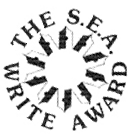
Atsiri Thammachot (อัศศิริ ธรรมโชติ, 1947 - ) erhält den Southeast Asian Writers Award für die Kurzgeschichte Khun-Thong you will return at dawn (ขุนทองเจ้าจะกลับเมื่อฟ้าสาง)
Abb.: Einbandtitel
"Atsiri Thammachot, winner of the Southeast Asian Writers Award in 1981 for the short story Khun-Thong you will return at dawn (ขุนทองเจ้าจะกลับเมื่อฟ้าสาง), was born on 10 July 1947 in the Hua Hin (หัวหิน) district of Prachuap Khiri Khan (ประจวบคีรีขันธ์) to a family that fished the waters of the Gulf of Thailand for a living.[1] He attended school in Hua Hin until his father lost his fishing boat at sea, at which point the family mortgaged the house and land so that the father could purchase another one, which he then lost at sea soon after.[2] Before entering study in the department of Communication Arts at Chulalongkorn University in 2513 (1970), and after finishing up his secondary education in Bangkok, a brief biography in khɔ̀ɔp fáa thá-lee kwâaŋ (ขอบฟ้าทะเลกว้าง) notes that Thammachot worked for the National Statistics Office (NSO) in the provinces of Sakon Nakhon (สกลนคร), Nakhon Phanom (นครพนม), and Phetchabun (เพชรบูรณ์) for two years, which is noted to be a time that allowed him to become informed of the problems facing communities in rural areas. Part of the reason for his going to work for the NSO were the difficult financial circumstances his family was confronting with respect to the fishery bringing in insufficient income.[1] In the prelude to his work, dèk phûu-jǐŋ khon kɛ̀ɛ mɛɛw lɛ́? phǒm [ผู้หญิง คนแก่ เด็ก แมว และผม], it is noted that while surveying for the NSO Thammachot went to villages with three hundred households or more, where beyond fulfilling his role of collecting data for the census he was able to communicate with household members on a variety of subjects, gaining first-hand accounts to learn of the particular challenges and obstacles facing these groups of people, and building up a more well defined sense of life in Isan [อีสาน] and the north.
Marcel Barang writes that the period Thammachot spent working for the NSO in the Northeast and North exposed him to the “hotbeds of communist insurgency” that were prevalent in the late 1960s, and that during this time he started to drink, began to have an interest in politics, and kept records of his experiences that later functioned as a foundation for his future literary projects. Barang further notes that the 1972 work, An old man’s memories (sǎm-nʉ́k khɔ̌ɔŋ phɔ̂ɔ thâw), was the first of his short stories, and was based in large part on the experiences he had acquired while living in the Northeast.
When Thammachot completed his secondary school education in Bangsue (บางซื่อ´) north of Bangkok, he attempted to study in the department of Political Science at Chulalongkorn (จุฬาลงกรณ์มหาวิทยาลัย) but failed to gain admission.[2] However, after working for the NSO, he was accepted into the department of Public Relations and Mass Communications at Chulalongkorn.[2] He began writing when he was an undergraduate student; for the short story An old man’s memories, noted above, he received third place in the competition for the prize phláp phlaam maa-lii [พลับพลามาลี] in 2515 (1972) from the ‘Chulalongkorn Literary Assembly’.[1]
After university, he went to work for two to three newspapers and attempted, without much success, to publish books about cinema.[3] In 2517 (1974) he worked as a newsman for Siamrath [สยามรัฐรายวัน] and became a regular editor for the newspaper’s entertainment page; however, during the 1980s he was a regular columnist for Siamrath, and additionally assisted editors in choosing articles and letters to publish in the newspaper.[3] Atsiri Thammachot still writes articles for Siamrath, and his pieces appear periodically in the form of editorials. In a discussion provided by a literary analysis group following the stories in the collection bâan rim thá-lee [บ้านริมทะเล] it is noted that Thammachot’s employment at the newspaper constrains the opportunities he has to write short stories, but at the same time, his role working in news media adds to his creative capacity through the perspective of one who is an observer (paraphrasing from Thai).[4]
As for the themes that motivate his creative works, Thammachot remarks that he aims to have people in Thai society understand the lives of one another, especially the ‘small lives’ that exist at the fringes of society in Thailand. He says further that if he is able to accomplish this, regardless of how much or little this goal is met, people will be able to establish love and understanding and will be able to help and assist one another.[3]
In the collection of short stories bâan rim thá-lee [บ้านริมทะเล] a discussion following the texts by the Literary Analysis Group (klùm waan-ná-kaam phí-nít) provides outlines of the rhetorical character and central themes that emerge in Thammachoat’s work. Noting that his stories use language to generate a soft rhythm, the discussion points out that in almost all of Thammachot’s stories, the concept of pleasure and enjoyment (khwaam-rʉ̂ʉn-rom [ความรื่นรมย์]) as a guiding theme in the plot is absent. Recognizing that there are definite trends of sorrow, the Group also notes, however, that the central themes of his work do not concentrate on or suggest a loss of hope. Rather, concepts such as coming to an understanding of the realities of certain conditions, gaining new knowledge, and uncovering the beauty that hides in life’s small things (paraphrasing from Thai) appear in his work. The use of such ideas implies a sense of introducing a moral direction, which is aimed to educate the reader in some way. In comparison with his short stories, his novels are said to bear a lot of similarities in terms of main ideas; however, the novels contain significantly more description and attention to individual details. For example, plots concentrating on people who earn a livelihood from the sea tend to show up amid changing economic and environmental circumstances owing to forces beyond their control in both types of work. Marcel Barang sums up Thammachot’s literary contributions as focusing on “the plight of the common man”[2]
[Quelle: http://en.wikipedia.org/wiki/Atsiri_Thammachot. -- Zugriff am 2015-05-25]
1981
Es erscheint der erste Band von
Kukrit Pramoj [คึกฤทธิ์ ปราโมช] <1911 - 1995>: Si phaendin = Four reigns / English version by Tulachandra [ตุลย์จันทร์]. -- Bangkok : Duang Kamol, 1981. -- Originaltitel: สี่แผ่นดิน (1951)
Abb.: Einbandtitel von Bd. 2
1981
Es erscheint das erste Album der Rockband Carabao (คาราบาว): ลุงขี้เมา ("Der betrunkene alte Mann").
Abb.: Cover
[Bildquelle: Wikipedia. -- Fair use]Das Album auf Spotify:
URI: spotify:album:6zzE1ZiESiFEIQ8rMUNSId
URL: https://open.spotify.com/album/6zzE1ZiESiFEIQ8rMUNSId
"Carabao (Thai คาราบาว) ist eine thailändische Rockband, die in Thailand und anderen asiatischen Ländern sehr beliebt ist[1]. Die Gruppe wurde 1976 von den Studenten Yuenyong Opakul (Aed) (ยืนยง โอภากุล (แอ๊ด)) und Kirati Phromsaakhaa na Sakon Nakhon (Keo oder Khiao) (กีรติ พรหมสาขา ณ สกลนคร (เขียว)) gegründet, die sich beim Studium auf den Philippinen kennenlernten[2]. Das Wort Carabao ist Tagalog und bedeutet Büffel, ein Symbol für kämpfen, hart arbeiten und Geduld. Stil
Sie sind bekannt für ihre „phleng phuea chiwit“ (เพลงเพื่อชีวิต) oder „Lieder für das Leben“. Diese Art von Musik wurde durch die Protestsongs der 1970er politischen Unruhen in Thailand beliebt. Carabao haben den akustischen Folk-Stil von „phuea chiwit“ erweitert mit anderen Formen thailändischer Musik, westlichem Rock, Hard Rock, Country und Musikstilen wie Latin und Reggae. Deswegen werden sie auch als „Ethnic Rocker“, „Kings of Cha-Cha-Cha“ oder „Rolling Stones Asiens“[3] genannt.
In den Liedern von Carabao geht es um soziale und politische Themen, Forderungen nach sozialer Gerechtigkeit und um die Anliegen der einfachen Menschen. Aber es gibt auch Liebeslieder und philosophische Lieder mit Botschaften für alle Menschen. Aed Carabao (แอ๊ด) wird von vielen geliebt. Trotz seiner scharfen Zunge und seiner offenen Kritik an Politikern, Wirtschaft und Umweltzerstörung ist er schon lange erfolgreich. Mindestens ein oder zwei Lieder von den Alben der mittleren 90er wurden von der Regierung verboten. Die Band wurde damals von öffentlichen Fernseh- und Radiostationen weitgehend ignoriert[2]. Trotzdem ist Carabao die beliebteste Rockband Thailands. Carabao hat den Kult-Status schon lange erreicht und zählt heute zu den erfolgreichsten legendären Rockgruppen der Welt. Sie werden mit U2 verglichen[4].
GeschichteCarabao hat eine lange und wechselhafte Geschichte. Es gab einige Umbesetzungen. Mehrere Mitglieder haben die Band verlassen und sind wieder zurückgekehrt. Bandleader, Gitarrist, Leadsänger, Songschreiber und Komponist Aed (แอ๊ด) ist das einzige Mitglied, welches bei allen Alben und Tourneen mitgewirkt hat.
AnfängeCarabao wurde ursprünglich auf den Philippinen gegründet von Aed, Keo (Khiao) und einem weiteren Mitglied, die alle sangen und Gitarre spielten. Als Aed nach Thailand zurückkehrte gab es zunächst keine gemeinsamen Auftritte mehr. Aed war zunächst als Architekt tätig und nebenbei weiter als Musiker aktiv. Er schrieb ein Lied für die Liveband Hammer und spielte aushilfsweise bei der Band Hope. Nachdem er Erfahrungen mit anderen Bands gemacht hatte, wollte er eine eigene Band haben und Carabao wurde wieder ins Leben gerufen. Er überzeugte Keo (Khiao), zurückzukehren und von nun an Bass zu spielen.
Die ersten AlbenDas erste Album Lung Khi Mao (ลุงขี้เมา - Betrunkener alter Mann) wurde 1981 von Aed und Keo herausgebracht. Unterstützt wurden sie hierbei durch Mitglieder von Hope, da der jungen Band ein Schlagzeuger, ein Lead-Gitarrist und ein Keyboarder fehlten. Auf dem Album waren einfache Folksongs, die sich nur wenig von anderen „Lieder für das Leben“-Bands dieser Zeit unterschieden, aber es gab Einflüsse von Rockmusik. Einige Melodien waren von asiatischen oder thailändischen Folk- und Rocksongs übernommen. Der Titelsong verwendete die Melodie eines philippinischen Volksliedes. Das Album wurde nicht oft verkauft, aber Aed fand neue Mitglieder für eine überzeugende Liveband.
Der Durchbruch kam mit dem Gitarristen und Sänger Preecha Chanapai (Lek) (ปรีชา ชนะภัย (เล็ก)). Lek hatte einen ausgeprägten und kraftvollen Stil ähnlich wie Santana, wodurch Aed mehr Vertrauen in die Band hatte. Zu dieser Zeit spielte Lek in The President Band. Beim zweiten Album von Carabao wurden Aed, Lek und Keo von Mitgliedern dieser Band unterstützt. Auf diesem Album spielte Keo wieder Gitarre und der Bassist Anupong Prathompatama (Ot) (อนุพงษ์ ประถมปัทมะ (อ๊อด)) von der President Band spielte Bass. Ot wurde zu einem der treuesten Mitglieder der Band.
Mit ihrem dritten Album wurden Carabao im ganzen Land bekannt. Waniphok (วณิพก - Der wandernde Musikant) mit dem gleichnamigen Titelsong erzählt die Geschichte eines blinden Straßenmusikers und wurde ein großer Hit. Dieses Lied zeichnet sich durch den „Sam Cha“-Rhythmus aus, eine Mischung von nordöstlichen Thai Folk Rhythmen wie Mor Lam und Luk Thung sowie Latin-Rhythmen. Spätere Carabao-Alben zeichnen sich durch viele Lieder in diesem Stil aus. Aed bemerkte mit Stolz, dass Discos in Thailand vor Waniphok nur westliche Lieder spielten, aber der eingängige, bodenständige Rhythmus des Lieds ermöglichte den Durchbruch.
Beim vierten Album spielte der Schlagzeuger Amnaat Luukjan (Pao) (อำนาจ ลูกจันทร์ (เป้า)) mit, welcher bei der Band blieb.
RuhmCarabaos beliebtestes Album Made In Thailand (เมดอินไทยแลนด์) entstand 1984 und wurde bis heute über vier Millionen Mal verkauft.[4] Der Titelsong war auch in einigen Nachbarländern erfolgreich. Das Album zeichnet sich durch eine bemerkenswerte Vielfalt von Musikstilen aus: Rock, Folk, regionale Thai-Stile wie Mor Lam und Luk Thung, Reggae und Latin, so wie klassische thailändische Musik mit dem Lied เรฟูจี (Refugee).
Zu dieser Zeit stießen zwei weitere Musiker zu Carabao: Thanit Siiklindii (Ajaan) (ธนิสร์ ศรีกลิ่นดี (อาจารย์)) mit Holzblasinstrumenten und Gitarrist/Sänger Thierry Mekwattana (เทียรี่ เมฆวัฒนา (รี่)). Keo wurde nun Background-Sänger und Multi-Instrumentalist. Die jetzige Besetzung: Aed, Lek, Thierry, Keo, Ajaan, Ot und Pao wird von vielen Fans als die klassische Besetzung bezeichnet.
Mit dieser Besetzung wurden in den 1980ern weitere Alben aufgenommen. Es entstanden kraftvolle, ungewöhnlich vielseitige und zunehmend politische Werke wie die Hits Welcome to Thailand (เวลคัมทูไทยแลนด์), Khon Chon Phuyingyai, Mae Sai und Thaplang (ทับหลัง). Letzteres handelt über den Diebstahl eines antiken Tür-Sturzes (Thai: ทับหลัง − Thaplang) aus dem Khmer-Tempel Prasat Hin Khao Phanom Rung (ปราสาทหินเขาพนมรุ้ง), der den ruhenden Gott Vishnu (Thai: พระนารายณ์ - Phra Narai) darstellt [5]. Er tauchte später in einem amerikanischen Museum auf, was zu Protesten der thailändischen Regierung führte. Durch Vermittlung des thailändischen Historikers M.C. Subhadradis Diskul wurde das Kunstwerk 1998 wieder zurückgegeben. Der Refrain des Liedes lautet übersetzt „Behaltet Euren Michael Jackson, aber gebt uns unseren Vishnu zurück!“ Während dieser Zeit festigten Carabao ihren Ruf als Thailands beliebteste Musikgruppe aller Zeiten.
AuflösungNach dem Album Thaplang (ทับหลัง) von 1988 begann die Band sich aufzulösen, da einige Mitglieder Solokarrieren starteten. Zuerst gingen Thierry, Ajaan und Pao, welche einen Ableger der Band gründeten. Nach dem zehnten Album Ham Chot Khwai (ห้ามจอดควาย) gab die Band ihre Trennung bekannt. Aber Aed, Lek und Ot spielten bald wieder zusammen mit neuen Musikern: Luechai Ngamsom (Duk) (ลือชัย งามสม (ดุก)) an den Keyboards und Chuchat Nuduang (Ko) (ชูชาติ หนูด้วง (โก้)). Zunächst hatte die Band einen anderen Namen, aber Aed wurde dazu überredet, den Namen Carabao wieder aufleben zu lassen und so spielte Carabao mit neuer Besetzung. Aed war nun das einzige Gründungsmitglied in der Band. Nach dem zwölften Album Satcha Sip Prakan (สัจจะ ๑๐ ประการ) erlebten die Fans den nächsten Schock mit dem Weggang von Lek, welcher durch den Gitarristen Khajornsak Hutawatana (Mi) (ขจรศักดิ์ หุตะวัฒนะ (หมี)) ersetzt wurde. Obwohl die Fans nicht glücklich mit der neuen Besetzung waren, entstanden in dieser Besetzung drei Alben in den frühen 90ern. Trotz des geringeren kommerziellen Erfolgs blieb Carabao eine der bedeutendsten thailändischen Bands. Die Singles Raeng Koi und Luang Pho Khun wurden oft von thailändischen Radiostationen gespielt.
Wiedervereinigung1995 kam die Band wieder in ihrer klassischen Besetzung zusammen und feierte das 15-jährige Bandjubiläum. Sie nahmen das Doppelalbum Hak Huachai Yang Rak Khwai (หากหัวใจยังรักควาย - Wenn du noch immer Büffel liebst) auf. Dieses wurde zum größten Erfolg der Band seit einigen Jahren und so wurden sie auch wieder Thailands größte Band. Aber die Wiedervereinigung hielt nicht lange. Danach spielte wieder die Besetzung Aed-Ot-Duk-Mi-Ko, welche im Studio von Keo unterstützt wurde.
Für ihr 18. Album Amerikan Anthaphan (อเมริกันอันธพาล) schlossen sich Lek und Thierry wieder der Band an, an der noch 4 weitere Mitglieder der klassischen Besetzung beteiligt waren (Aed, Lek, Thierry und Ot) sowie 3 spätere Mitglieder (Duk, Ko, Mi) und als neue Mitglieder der Perkussionist/Flötist/Schlagzeuger Thepajon Phanthuphongthai (Uan) und der zweite Perkussionist/Bassist Sayaphon Singthong (Nong).
GegenwartDie Band hat weitere Alben aufgenommen, die sowohl kommerziell als auch in den Augen der Kritiker erfolgreich waren. Die Besetzung blieb weitgehend stabil. Nur Nong hat die Band vor kurzem verlassen. Obwohl Keo seit Jahren kein offizielles Mitglied ist, unterstützt er die Alben mit Gesang, Gitarre und Produktionsassistenz. Pao nimmt gelegentlich an Liveauftritten teil. Das letzte Album der Band Yisip-Ha Phi Luk Lung Khi Mao (๒๕ ปี ลูกลุงขี้เมา, 25 Jahre − das Kind des betrunkenen alten Mannes) erschien 2007 zu ihrem 25-jährigen Bestehen. Zum 80. Geburtstag von König Bhumibol Adulyadej erschien auf diesem Album das Lied Tam Roy Pho (Folge der Spur des Vaters), mit dem die Band dem König Respekt zollt.
DiskografieBis heute hat Carabao insgesamt 26 offizielle Studioalben aufgenommen - Vol. 1 bis Vol. 26 / 1981 - 2009. Zusammen mit einigen Spezial- und Livealben sowie den Compilations gibt es mehr als 60 Veröffentlichungen[6].
[...]
Referenzen
- http://www.thaiworldview.com/music/music4.htm
- http://www.bbc.co.uk/dna/h2g2/A467778
- http://www.mopo.de/2005/20051006/plan7/veranstaltungstipps/clubs-szene/musikalische_wasserbueffel.html
- http://www.der-farang.com/?article=2005/24/cover
- Siehe: Abbildung des Türsturzes auf Commons
- http://home.swipnet.se/muang_carabao/index2.htm"
[Quelle: http://de.wikipedia.org/wiki/Carabao_%28Band%29. -- Zugriff am 2011-11-14]
1981
Debut des Mädchen-Pop-Trios Sao Sao Sao (สาว สาว สาว)
Die Gruppe auf Spotify:
URI:
spotify:artist:0DodixwpP13u73beI55Vb4
URL:
https://open.spotify.com/artist/0DodixwpP13u73beI55Vb4
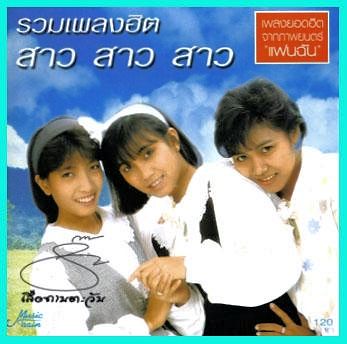
Abb.: ©CD-Titel
|
"Sao Sao Sao (Thai: สาว สาว สาว) was a Thai pop music trio that performed from 1981 to 1989. The group consisted of Sauwaluk Leelaboot (เสาวลักษณ์ ลีละบุตร, 1965 - ), Patcharida Wattana (พัชริดา วัฒนา, 1967 - ), and Orawan Yenpoonsuk (อรวรรณ เย็นพูนสุข, 1964 - ) then contract on record label Rod fai don tri (รถไฟดนตรี). They are considered to be one of the most successful Thai girl groups." [Quelle: http://en.wikipedia.org/wiki/Sao_Sao_Sao. -- Zugriff am 2013-04-09] |
1981

Der britische Rock- und Pop-Sänger Rod Stewart (1945 - ) gastiert in Bangkok.
Künstlerlink auf Spotify:
URI:
spotify:artist:2y8Jo9CKhJvtfeKOsYzRdT
URL:
https://open.spotify.com/artist/2y8Jo9CKhJvtfeKOsYzRdT

Abb.: Rod
Stewart, Norwegen, 1976
[Bildquelle: Helge Øverås / Wikipedia. -- GNU
FDLicense]
1981
Es erscheint der sozialkritische Kurzroman
ชาติ กอบจิตติ [Chart Kobchitti] <1954 - >: จนตรอก [Am Ende der Sackgasse]
Abb.: Einbandtitel einer der Ausgaben
"Der Autor beschreibt in diesem Werk den fortschreitenden Niedergang und Verfall einer kleinen, dem Proletariat angehörenden Familie in einem Bangkoker Slum, wobei er sich an einen in der Presse berichteten Fall anlehnt." [Quelel: Rosenberg, Klaus <1943 - 1988>: Sozialkritische Literatur in Thailand : Protest und Anklage in Romanen und Kurzgeschichten eines Landes der Dritten Welt. -- Hamburg : Ges. für Natur- u. Völkerkunde Ostasiens, 1986. -- 360 S. ; 21 cm. -- (Gesellschaft für Natur- und Völkerkunde Ostasiens: Mitteilungen der Gesellschaft für Natur- und Völkerkunde Ostasiens e.V. Hamburg ; Bd. 101). -- S. 195]
1981
Briefmarken:
1981
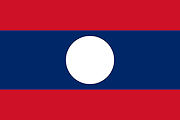
Hmong-General Vang Pao (1929 - 2011), Prinz Sisouk na Champassak (ນະ ຈຳປາສັກ, 1928 - 1985), General Phoumi Nosavan (ພູມີ ໜໍ່ສະຫວັນ / 富米諾薩萬. 1920 - 1985), General Kouprasith Abhay sowie vier weitere Laoten gründen von den USA aus die United Lao National Liberation Front (ULNF, Neo Hom). Man sammelt Geld unter den Hmong in den USA und bewaffnet und unterstützt Hmong Guerillas in den thailändischen Flüchtlingslagern.
1981-01
Khaiseng Suksai, ein ehemaliger Abgeordneter der Thai Socialist Party, ergibt sich.
1981-01

Eine Regierungsdelegation der Volksrepublik China besucht Thailand (中华人民共和国). Delegationsleiter ist der chinesische Ministerpräsident Zhao Ziyang (赵紫阳, 1919 - 2005)
1981-01
In einer Zeitschrift erscheint die sozialkritische Kurzgeschichte:
รุ่งแสง [Rungsang]: นาบุญของใคร [Wessen Verdienst-Feld]
"Die Kurzgeschichte "Wessen Punna-Feld" [นาบุญของใคร] (1981) von Rungsang [รุ่งแสง] erhebt gezielte Anklage gegen Tendenzen innerhalb des buddhistischen Ordens, sich aus materiellen Interessen mit den Reichen zu liieren und dabei die Armen zu vernachlässigen. Dabei wird hier der Missbilligung eines Frömmigkeitsbegriffs Ausdruck verliehen, demzufolge die hinter dem verdienstlichen Werk stehende Gesinnung weniger zählt als dessen Geldwert. Hauptperson dieser Kurzgeschichte ist eine Fabrikarbeiterin, die von ihrer ärmlichen Hütte aus beobachtet, wie ein Mönch auf seinem täglichen Almosengang vor dem Haus des Fabrikbesitzers stehen bleibt, sich längere Zeit freundlich und vertraut mit diesem und seiner Familie unterhält und schließlich Speisegaben von ihm entgegennimmt, die dem Gebenden religiöses Verdienst einbringen. Bei diesem Anblick erwacht in der Arbeiterin der Wunsch, trotz ihrer äußerst beschränkten wirtschaftlichen Verhältnisse ebenfalls ein verdienstvolles Werk zu tun. Da sie nichts anderes hat, was sie dem Mönch geben könnte, sucht sie von dem wildwachsenden Gemüse, das sie kurz zuvor an einem Kanalufer gepflückt hat, die zartesten Blätter aus und bindet sie mit einem roten Band zu einem Bund zusammen. Dieses überreicht sie dem Mönch, als er kurz darauf an ihrer Hütte vorüber kommt. Als sie jedoch am folgenden Tag zur Arbeit geht, sieht sie am Wegrand das achtlos fortgeworfene Gemüse mit dem roten Band liegen." [Quelle: Rosenberg, Klaus <1943 - 1988>: Sozialkritische Literatur in Thailand : Protest und Anklage in Romanen und Kurzgeschichten eines Landes der Dritten Welt. -- Hamburg : Ges. für Natur- u. Völkerkunde Ostasiens, 1986. -- 360 S. ; 21 cm. -- (Gesellschaft für Natur- und Völkerkunde Ostasiens: Mitteilungen der Gesellschaft für Natur- und Völkerkunde Ostasiens e.V. Hamburg ; Bd. 101). -- S. 302f.]
1981-01-10
Die Strompreise in Bangkok werden um 15% erhöht. Es ist dies die dritte Preiserhöhung innerhalb von 12 Monaten.
1981-01-17

Der philippinische Staatspräsident Ferdinand Emmanuel Edralin Marcos (1917 - 1989) hebt das seit 8 Jahren bestehende Kriegsrecht auf. Er behält sich aber noch entscheidende Sonderrechte bezüglich Gesetzgebung, Vorbeugehaft und Oppositionellen vor.
Abb.: Ferinand Marcos mit Gattin Imelda und US-Präsident Reagan, 1982
[Bildquelle: Wikipedia. -- Public domain]
1981-01-20 - 1989-01-20

Ronald Reagan (1911 - 2004) ist Präsident der US.
Abb.: Ronald Reagan
[Bildquelle: DonkeyHotey. -- http://www.flickr.com/photos/donkeyhotey/5276647214/in/photostream/. -- Zugriff am 2013-05-21. -- Creative Commons Lizenz (Namensnennung, share alike)]
1981-01-20
Der Ministerpräsident gründet CPM-43 (Civilian-Police-Military Unit 43) zur Befriedung der vier malaiisch-muslimischen Südprovinzen. Ein Nebenprojekt davon ist das Land Resettlement Projekt: Buddhisten aus ganz Thailand bekommen an der malaysisch-thailändischen Grenze Land und werden dort angesiedelt. Sie dienen gleichzeitig als Spione für Militär und Polizei.
Gleichzeit gründet der Ministerpräsident das Southern Border Provinces Administration Centre (SBPAC / ศูนย์อำนวยการบริหารจังหวัดชายแดนภาคใต้ / ศอ.บต.). Erster Chef ist Charoenjit na Songkhla (เจริญจิตต์ ณ สงขลา, 1930 - ). Charoenjit versetzt über 2000 Beamte, meistens Polizisten, aus Südthailand, die der Misshandlung der Bevölkerung beschuldigt werden.
Abb.: ®Logo des SBPAC
[Bildquelel: th.Wikipedia]
1981-01-21

Kurzbesuch des japanischen Ministerpräsidenten Suzuki Zenkō (鈴木 善幸, 1911 - 2004)
1981-01-22 - 1982-07-05

Alexander Haig (1924 - 2010) ist US Secretary of State (Außenminister).
Abb.: Alexander Haig
[Bildquelle: US Army / Wikipedia. -- Public domain]
1981-01-25

In Beijing: Urteile im Prozess gegen die "Viererbande" (四人帮/四人幫). Todesurteil gegen Jiang Qing ( 江青, der Frau Mao Zedongs), Zhang Chunqiao ( 张春桥), die anderen erhalten zwischen 16 Jahren Haft und lebenslänglich.
Abb.: Plakat gegen die Viererbande
[Bildquelle: Wikipedia. -- Fair use]
"Die Viererbande (chin. 四人帮/四人幫 Sìrénbāng) war eine Gruppe von Führungskräften aus dem linken Flügel der Kommunistischen Partei Chinas, die vor und kurz nach Mao Zedongs (毛泽东) Tod 1976 große Macht ausübte. Die Viererbande hatte maßgeblichen Einfluss auf den Verlauf der Kulturrevolution. Die Entscheidungen, die von der Viererbande getroffen wurden, sind allerdings schwer von denen zu trennen, die von Mao selbst diktiert wurden. Diese Wissenslücke ermöglichte es späteren chinesischen Führungen, die Schuld an den grausamsten Taten der Kulturrevolution der Viererbande zuzuweisen und die zentrale Gründerfigur Mao damit zu entlasten. Die Viererbande bestand aus Jiang Qing ( 江青, der Frau Mao Zedongs), Zhang Chunqiao ( 张春桥), Yao Wenyuan ( 姚文元) und Wang Hongwen (王洪文). Später zählte man dazu auch Kang Sheng (康生) und Xie Fuzhi ( 谢富治), die 1976 schon verstorben waren. Der chinesische General Lin Biao ( 林彪) war bis zu seinem Tod im Jahre 1971 ebenfalls ein Mitglied der Gruppe. Enge Verbündete der Viererbande waren Chen Boda ( 陈伯达) und Maos Neffe Mao Yuanxin (毛远新).
Zhang, Yao und Wang waren regionale Parteiführer in Shanghai. Als Mao 1966 die Kulturrevolution ausrief, um die damalige Führung der Kommunistischen Partei zu bekämpfen, übernahm Jiang Qing, die bis dahin nicht öffentlich in Erscheinung getreten war, eine aktive Rolle. Die Machtübernahme gelang der Viererbande einerseits durch die direkte Kontrolle über die Massenmedien und andererseits durch Ausnutzung des Prestiges, das Jiang Qing als Witwe des Staatsgründers Mao genoss.
Laut chinesischen Quellen hatte Jiang Qing den Plan, unmittelbar nach Maos Tod die Macht an sich zu reißen. Dazu hätte sie belastendes Material gegen Hua Guofeng, Ye Jianying, Lin Biaos Nachfolger als Verteidigungsminister, und andere altgediente Kader veröffentlicht, um nach deren Beseitigung den Parteivorsitz zu übernehmen. Zhang Chunqiao, Wang Hongwen und Yao Wenyuan hätten Vizevorsitzende werden sollen. Während des Schauprozesses 1980 konnte die Planung des Sturzes Hua Guofengs zwar nicht eindeutig bewiesen, jedoch mit hoher Wahrscheinlichkeit angenommen werden.
Der Name „Viererbande“ wurde dieser Gruppe von Mao selbst gegeben. Mao war sich bewusst, dass diese Gruppe eine potentielle Gefahr für seinen alleinigen Machtanspruch darstellte und warnte Jiang Qing: „Ihr müsst aufpassen. Bildet nicht eine kleine Fraktion von vier Leuten."“
[Quelle: http://de.wikipedia.org/wiki/Viererbande_%28China%29. -- Zugriff am 2011-11-30]
1981-01-28 - 1987-01-29

William J. Casey (1913 - 1987) ist Direktor des CIA.
Abb.: William J. Casey
[Bildquelle: CIA / Wikipedia. -- Public domain]
1981-02
Es erscheint:
Sheppard, Christopher: Wisdom from above. -- In: The new internationalist <Oxford>. -- No. 96 (1981-02). -- Online: http://www.easternfleurieu.sa.edu.au/ni/issue096/keynote.htm. -- Zugriff am 2015-08-26
"Many Third World countries are still heavily staffed with expatriates. All are experts. Speaking to the Minister, calling a top-level meeting, sending black and white officials scurrying, is the leader of the gang - the short-term consultant. Sharp-shooting, hard-talking, high-flying - often he holds the purse strings of an international aid agency or his own government. But a developing country may have only three weeks to prise these strings from his hand. His own purse is well-lined - $300 a day plus expenses in the case of the World Bank.
[...]
The desk-bound expert means top-down development almost by definition. First think of a cure for poverty in a well-sanitised office. Next a quick bedside visit to the patient in the shape of a village tour. If the poor take their medicine according to the directions, they will be cured. If they refuse, then they only have themselves to blame. The patient gets no choice of medicines. He can only co-operate with, but never participate in, the treatment.
Faced with boycotts of their projects experts have tried to manufacture 'participation'. Farmers' committees and self-help groups are now considered vital components of good projects. But still the poor are excluded. A World Bank expert working on a Bangladesh tubewell project admitted he had given up investigating the landholdings of co-operative chairmen: they were always the big farmers. And, he admitted, `100 per cent of the wells were going to the big boys'.
The local elite on their farms, the government elite in their offices, and the foreign experts in theirs. A big club perhaps. But an exclusive one. In the town they share the symbols of `expatriate life' - creating islands of privilege surrounded by lamentable poverty. The foreigners bring a taste for food and consumer comfort that needs to be specially met - or they won't stay. Air conditioning, fresh vegetables, imported gin, special schools for their children. Fees and airfares are standard contract perks, while tax-free salary cheques thud monthly into home bank accounts to meet mortgage repayments and soften the hard realities of Western recession.
Up to 25 per cent of Western aid budgets is spent on experts. After salary, airfares, school fees, various perks, and home-based overheads are covered, the average British expert costs $150,000 a year. And that's considered cheap on this circuit. The money creates a lifestyle that is difficult to sustain back home. Yet this is the carrot dangled in front of the local community - driving government salaries up to satisfy the ever present hunger for consumer goods, and at the same time creating an even bigger gap between the urban rich and the rural poor.
The expert is a necessary evil, perhaps. But can he be an agent for constructive change? Certainly the cards seem stacked against him: divorced from the poor once by his profession, twice by his culture, and a third time by the rules of the game. Information about poverty is channeled through the local administration. Occasional visits to the village may add colour, but are unlikely to provide an alternative view-point. The expert who seriously challenges his host's interpretation of local problems is quite likely to be shown the door. A Western sociologist working at the University of Malawi circulated a paper criticising the showpiece Lilongwe Development Project - President Banda's pride and joy - and soon found himself packing his bags. The threat of being `PI'd' (made a prohibited immigrant) by an angry government hangs over every `guest worker'.
But what about the good expert? Champion of the poor, shunning luxury, living in a mud but among the people, heroically exposing exploitation wherever he finds it. He doesn't exist. Some experts live in villages. Some do their best to focus attention on the plight of the under-privileged. Some stand on principle and lose their jobs. But alone, they can never effectively challenge the local structure of power."
[a.a.O.]
1981-02-16 -1981-03-08
Thahan Phran (ทหารพราน, Rangers), unterstützt von Volunteer Defence Corps (Or Sor) (อส. = กองอาสารักษาดินแดน) und Kuomintang (中國國民黨), nehmen nach wochenlangen schweren Kämpfen den Stützpunkt Khao Kho (เขาค้อ), Provinz Phetchabun (เพชรบูรณ์), der Communist Party of Thailand (CPT, พรรคคอมมิวนิสต์แห่งประเทศไทย) ein.
"The old Gen. Duan Xiwen [段希文 / ต๋วน ชีเทวิน, 1900 - 1980] of the 5th KMT [Kuomintang / 中國國民黨] had died in a Bangkok hospital on 18 June 1980, and was put to rest in a grand tomb built on a hillock on the outskirts of Mae Salong [แม่สลอง], the prosperous community he had founded in the mountains northwest of Chiang Rai. His chief of staff, Col. Lei Yutian, succeeded him as commander of the 5th KMT. Lei had hardly settled in as new chief of Mae Salong when the local 04 command post there relayed an important message from the Thai Army's Supreme Command in Bangkok: help was urgently needed to dislodge CPT [Communist Party of Thailand / พรรคคอมมิวนิสต์แห่งประเทศไทย] guerrillas from a strategically located peak overlooking Phitsanulok [พิษณุโลก] on the main railway from Bangkok to Chiang Mai.
The hilltop position, Mt. Khao Ya [เขาย่า], belonged to a larger complex of CPT strongholds in the Khao Khor [เขาค้อ] mountains, which rose to the east over Thailand's central plain. To the far west, bordering Burma, were the CPT strongholds south of Mae Sot [แม่สอด]. The Supreme Command in Bangkok had received reliable intelligence that the Thai Communists were planning to launch a major offensive aimed at cutting the railway and linking up with their comrades near Mae Sot. If this scheme succeeded, Thailand would be cut in two.52 Khao Ya had its own school, hospital, a small munitions factory, training camp, ammunition warehouses and administrative offices.
The Thais had lost large numbers of their own troops trying to penetrate the base, so the KMT—or "CIF" [Chinese Irregular Forces] as they were called officially, although almost no one used that name—were requested to muster 250 men each, divided into two sections: Unit 31 (the 3rd KMT) and Unit 51 (the 5th KMT). A young KMT officer from Mae Salong [แม่สลอง], Yang Weigang, was appointed frontline commander. The plan was endorsed by Prime Minister Kriangsak himself.
The Chinese irregulars were airlifted by C-130 planes to Phitsanulok, where they were joined by Thai Black Panther rangers [ทหารพราน]. The main attack was mounted on 16 February 1981. The Thai rangers formed the advance force, but were driven back by a heavy barrage of 57mm recoilless rifles and 60mm mortars.
Abb.: C-130 der RTAF, 2009
[Bildquelle: Jakkrit Prasertwit / Wikimedia. -- GNU FDLicense]The KMT officers concluded that they had failed because they had tried to launch a direct assault on the CPT's well-fortified positions. They recommended other tactics: Yang Weigang was ordered to lead his troops in a flanking manoeuvre around Khao Ya. After trekking through the dense forest, hiding by day and marching at night, his troops finally reached the rear of the mountain. According to Bo Yang:
"Carrying his rifle and stripped to the waist, Yang continually exposed himself to fire in the most dangerous sectors of the combat zone and made repeated charges towards the most heavily armed blockhouses."53
On 6 March, they attacked. On the 8th, after three days of bitter and heavy fighting, the young KMT officer finally reached the CPT encampment on the top of the mountain. By nightfall, the CPT had retreated and the KMT cleared the area. The threat to Phitsanulok— and indeed to Thailand as a whole—had been averted. When the heroes of Khao Ya later arrived at Chiang Mai airport, they were given a rousing welcome directed personally by the Thai overall commander of 04, Gen. Parkom. Disabled veterans were given a modest pension and certificates which enabled them to stay legally in Thailand."
Abb.: Lage von Khao Kho (เขาค้อ)
[Bildquelle: OpenStreetMap. -- Creative Commons Lizenz (Namensnennung, share alike)]
Abb.: Khao Kho (เขาค้อ), 2010
[Bildquelle: Chakard Chalayut. -- http://www.flickr.com/photos/molecularck/5152988783/. -- Zugriff am 2012-09-30. -- Creative Commons Lizenz (Namensnennung, keine kommerzielle Nutzung, share alike)]
Abb.: Bei den Kämpfen um Khao Kho (เขาค้อ) 1981 eingesetztes Panzerfahrzeug (damals wohl noch komplett), 2007
[Bildquelle: Neale Bryan. -- http://www.flickr.com/photos/nealebryan/2180373705/. -- Zugriff am 2012-09-30. -- Creative Commons Lizenz (Namensnennung, share alike)]
Abb.: Bei den Kämpfen um Khao Kho (เขาค้อ) 1981 eingesetztes Flugzeug, 2007
[Bildquelle: Neale Bryan. -- http://www.flickr.com/photos/nealebryan/2181162912/in/photostream/. -- Zugriff am 2012-09-30. -- Creative Commons Lizenz (Namensnennung, share alike)]
Abb.: Bei den Kämpfen um Khao Kho (เขาค้อ) 1981 eingesetzter Hubschrauber, 2007
[Bildquelle: Neale Bryan. -- http://www.flickr.com/photos/nealebryan/2180374975/in/photostream/. -- Zugriff am 2012-09-30. -- Creative Commons Lizenz (Namensnennung, share alike)]
Abb.: Kriegerdenkmal, Khao Kho (เขาค้อ), 2007
[Bildquelle: Neale Bryan. -- http://www.flickr.com/photos/nealebryan/2181168362/in/photostream/. -- Zugriff am 2012-09-30. -- Creative Commons Lizenz (Namensnennung, share alike)]
1981-02-24
Thirayuth Boonmee (ธีรยุทธ บุญมี, 1950 - ), der Studentenführer, der nach dem Massaker vom 6. Oktober 1978 in den Dschungel geflohen war, ergibt sich zusammen mit seiner Frau Siriporn (ศิริพร) und 53 weiteren kommunistischen Guerillas. Er hatte sich im Dschungel um den Phuparn Höhenzug (เทือกเขาภูพาน) versteckt gehalten.
Abb.: Lage des Phuparn Höhenzugs (เทือกเขาภูพาน)
[Bildquelle: Hdamm / Wikipedia. -- GNU FDLicense]
"Teerayut Bunmee (ธีรยุทธ บุญมี, 1950 - ) is a Thai public intellectual and a former student activist. Student leader
While a student at Chulalongkorn University (จุฬาลงกรณ์มหาวิทยาลัย) during 1973, Teerayut led the National Student Center of Thailand (NSCT) (ศูนย์กลางนิสิตนักศึกษาแห่งประเทศไทย - ศนท) in coordinating political activism against the military dictatorships of Thanom Kittikachorn (ถนอม กิตติขจร) and Praphas Charusathien (ประภาส จารุเสถียร). The NSCT led tens of thousands of people in public protests against the regimes. However, one of the first activities of the NSCT was a 10-day boycott against Japanese products, in protest against Japanese investments in Thailand.
In 6 October 1973, Teerayut along with 12 other students were arrested by the Praphas government for sedition after they distributed leaflets demanding a new constitution. Rumors spread that they had been killed, sparking massive protests against the government. Protests reached their peak in 13 October, when 400,000 demonstrators gathered in front of the Democracy Monument (อนุสาวรีย์ประชาธิปไตย) and parliament. That afternoon, Teerayut and the 12 other students were released and the King agreed on plans to draft a new constitution within 12 months.
Teerayut also played a role in exposing the Internal Security Operations Command's (กองอำนวยการรักษาความมั่นคงภายใน) role in a massacre of villagers at Ban Na Sai (นาทราย) village in the Northeast.
After the student massacre at Thammasat University (มหาวิทยาลัยธรรมศาสตร์) on 6 October 1976, Teerayut, as well as many other students and intellectuals fled from the cities to join the Communist Party of Thailand (CPT, พรรคคอมมิวนิสต์แห่งประเทศไทย) in their jungle strong-holds. Teerayut increasingly became critical of the King, noting in a broadcast on 1 April 1977 that the monarchy was "obsolete and deteriorating," and that "I think that if our people were to destroy it, there would be no adverse effects." After the CPT dissolved itself in the early 1980s, Teerayut returned to the mainstream of Thai intellectual life and renounced socialism.[1]
Contemporary activismTeerayut currently teaches at the Faculty of Sociology of Thammasat University (มหาวิทยาลัยธรรมศาสตร์). As of 1997, he was named one of Thailand's ten most influential public intellectuals.[2]
References
- Paul M. Handley, "The King Never Smiles" Yale University Press: 2006, ISBN 0-300-10682-3
- Influential intellectuals in Thai society
- Giles Ungpakorn, Cleansing democracy of socialism"
[Quelle: http://en.wikipedia.org/wiki/Thirayut_Boonmee. -- Zugriff am 2011-11-21]
1981-03
Es erscheint ein Zeitungsartikel von ชนวน [Chanuan]:
"Ganz ähnlich heißt es in einem literaturkritischen Zeitungsartikel vom März 1981, der sich speziell mit dem Teil der sozialengagierten Literatur auseinander setzt, der die Situation der thailändischen Landbevölkerung behandelt: "Das Bild des Bauern und des Dorfes in der Literatur für das Leben nach dem 14. Oktober weist in fast jedem Werk ähnliche Züge auf. Sie beginnen mit dem Elend, der Dürre, der betrügerischen Aneignung von Ackerland, der Drangsalierung und Unterdrückung durch staatliche Organe, und sie hören auf mit der Erhebung zum Widerstand; viele enden mit dem 'In-den-Wald-Gehen' und dem Ergreifen der Waffen wie z.B. 'Der Bezirk Chomakok' [ตำบลช่อมะกอก] von Wat Wanlayangkun [วัฒน์ วรรลยางกูร, 1955 - ]. " -
Der Verfasser dieses Artikels gelangt zu dem Ergebnis, dass die Schriftsteller künftig nur dann Erfolg dabei haben würden, beim Leser Anteilnahme am Schicksal der Landbevölkerung zu wecken, wenn es ihnen gelänge, ihren Werken eine diesem Ziel angemessene Form zu geben:
"Allgemein von Dürre, Unterdrückung, Ausbeutung, Problemen des Ackerlandes und Erhebung zum Widerstand zu reden, dürfte für diese Leser nicht mehr genügen.""
[Quelel: Rosenberg, Klaus <1943 - 1988>: Sozialkritische Literatur in Thailand : Protest und Anklage in Romanen und Kurzgeschichten eines Landes der Dritten Welt. -- Hamburg : Ges. für Natur- u. Völkerkunde Ostasiens, 1986. -- 360 S. ; 21 cm. -- (Gesellschaft für Natur- und Völkerkunde Ostasiens: Mitteilungen der Gesellschaft für Natur- und Völkerkunde Ostasiens e.V. Hamburg ; Bd. 101). -- S. 329f.]
1981-03-12
Die Regierung warnt Thais davor, Indochina-Flüchtlinge zu heiraten, da dies die nationale Sicherheit gefährde. Regierungsangestellte, die mit indochinesischen Flüchtlingen verheiratet sind, müssen sich regelmäßig bei den Vorgesetzten melden. Im Falle von Schwierigkeiten müssen sie sich entweder scheiden lassen oder sie werden aus dem Dienst entlassen. Die Behörden in Grenzgebieten müssen ihre Angestellten in Bezug auf sexuelle Beziehungen zu Indochina-Flüchtlingen besonders beobachten.
Abb.: Gefahr für die nationale Sicherheit: kambodschanische Flüchtlingsfrau, Flüchtlingslager Ban Mai Rut (บ้านไม้รูด), 1979
[Bildquelle: UN Photo/John Isaac. -- http://www.flickr.com/photos/un_photo/4417556066/. -- Zugriff am 2011-12-04. -- Creative Commons Lizenz (Namensnennung, keine kommerzielle Nutzung, keine Bearbeitung)]
Abb.: Lage von Ban Mai Rut (บ้านไม้รูด)
[Bildquelle: OpenStreetMap. -- Creative Commons Lizenz (Namensnennung, share alike)]
1981-03-20
Bei einem Verkehrsunfall stirbt der Filmschauspieler Jatuphon Phooaphirom (จตุพล ภูอภิรมย์, geb. 1951)
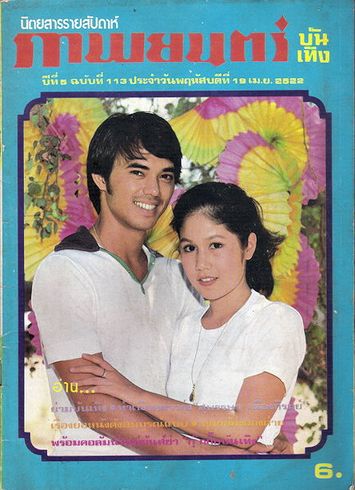
Abb.:
Zeitschriftentitel
[Fair use]
1981-03

Erstflug des deutschen STOL-Turbopropflugzeugs Dornier Do 228. Die Royal Thai Navy wird 7 Stück in Dienst stellen.
Abb.: Dornier Do 228-212 der Royal Thai Navy, 2011
[Bildquelle: Gerry Stegmeier / Wikimedia. -- GNU FDLicense]
1981-03-24

Michael Armacost (1937 - ), Deputy Assistant Secretary of State for East Asian and Pacific Affairs, vor dem House Subcommittee on Asian and Pacifica Affairs:
"Thailand’s continuing independence, territorial integrity, and stability is central to the stability of Southeast Asia and to the unity of ASEAN. Our commitment to Thailand under the Manila Pact has been repeatedly voiced by U. S. leaders, including President Reagan. Our willingness to provide tangible evidence of U. S. concern for the security and stability of Thailand, ASEAN’s "frontline state," would be seen by Thailand, by its ASEAN colleagues, and by others as an important demonstration of U. S. credibility." [Zitiert in: Randolph, R. Sean: The United States and Thailand : alliance dynamics, 1950-1985. -- Berkeley : Institute of East Asian Studies, University of California, 1986. -- 245 S. ; 23 cm. -- (Research papers and policy studies, 12). -- ISBN 0-912966-92-0. -- S. 224]
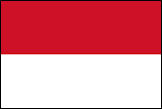
Indonesiens Präsident, Suharto, trifft sich in Bangkok mit Ministerpräsident Prem. Sie besprechen die regionale Sicherheit und den gegenseitigen Handel. Sie stimmen darin überein, dass die Anti-Vietnamesischen Kräfte in Kambodscha eine nationale Einheitsfront bilden. (Die wichtigste antivietnamesische Kraft sind die Mörderbanden der Roten Khmer (ខ្មែរក្រហម)!). Indonesien sieht in China die größte Bedrohung in der Region, Thailand in Vietnam.
Abb.: Lage von Thailand, Indonesien, China, Vietnam, Kambodscha
[Bildquelle: CIA. -- Public domain]
1981-04
Damri Ruengsutham, Politbüro-Mitglied der Kommunistischen Partei Thailands (CPT, พรรคคอมมิวนิสต์แห่งประเทศไทย, พคท) wird an einem Chackpoint in der Provinz Surat Thani (สุราษฎร์ธานี).
Abb.: Lage von Surat Thani (สุราษฎร์ธานี)
[Bildquelle: CIA. -- Public domain]
1981-04-01 - 1981-04-03


Gescheiterter "April Fool's Coup": Eine Gruppe von Offizieren unter der Leitung des stellvertretenden Armeechefs Gen Sant Chitpatima (สัณห์สณห จิตรปฏิมา) versuchen Ministerpräsident Prem in einem unblutigen Putsch zu stürzen. Prem flieht in das Hauptquartier der Zweiten Armee in Nakhon Ratchasima (นครราชสีมา). Er wird begleitet vom König und seiner Familie sowie Kabinettsmitgliedern und Provinzgouverneuren. Am 3. April nehmen Tausende von Prem-treuen Soldaten Bangkok wieder ein.
Abb.: Lage von Nakhon Ratchasima (นครราชสีมา)
[Bildquelle: OpenStreetMap. -- Creative Commons Lizenz (Namensnennung, share alike)]
1981-04-01
Tod des Musikers Eua Sunthornsanan (เอื้อ สุนทรสนาน, geb. 1910).
Künstlerlink auf Spotify:
URI: spotify:artist:7jJfjAlMBYINfSsEf5P2UN
URL: https://open.spotify.com/artist/7jJfjAlMBYINfSsEf5P2UN
Abb.: Eua Sunthornsanan (เอื้อ สุนทรสนาน, 1910 - 1981)
[Bildquelle: Wikipedia. -- Public domain]
"Eua Sunthornsanan (เอื้อ สุนทรสนาน; January 21, 1910, Amphawa (อัมพวา), Samut Songkhram Province (สมุทรสงคราม) – April 1, 1981) was a Thai composer and bandleader. A pioneer in introducing Western music into Thai popular culture, he founded the Suntaraporn band in the 1940s. Thailand's best-known big band, it continues to play concerts and special functions. Eua studied Western classical music at the Phran Luang School, starting on violin. By age nine, he was playing an orchestra. At age 18, he enrolled in the Vithaya Sakol Dontri Sathan music school, studying harmony and arrangement.
Around this time he played in a big band for the government's Performance Department. He was paid 20 baht a month. He continued to play classical music as well, but noticed that the jazz bands were attracting larger crowds, which made him realize that classical music was no longer in demand.
In 1936 he started composing scores for Thai films, and combined jazz and Western classical music with traditional Thai classical music. It was an already established genre, called phleng Thai sakol (เพลงไทยสากล), but with his compositions, he greatly expanded the repertoire. With his own popular big band, Suntaraporn, phleng Thai sakol found a wider audience.
Initially, he faced criticism for introducing Western sounds into Thai traditional culture, however his music was embraced by Field Marshal Plaek Pibulsonggram, whose government had a program of modernization and Westernization.[1]
Under the government's Public Relations Department, Eua headed an orchestra, which performed on national radio broadcasts, at government functions and dance parties. It served as the main orchestra in Thailand during the Second World War. He served as the orchestra chief and the chief of the music section for the department until his retirement in 1971.[2]
He died of cancer in 1981."
[Quelle: http://en.wikipedia.org/wiki/Suntharaporn. -- Zugriff am 2011-10-08
1981-04-03

Die US-Firma Osborne Computer Corporation bringt den ersten kommerziell erfolgreichen tragbaren Computer auf den Markt: Osborne 1. Er wiegt 10,7 kg.
Abb.: Osborne 1
[Bildquelle: Bilby / Wikimedia. -- Creative Commons Lizenz (Namensnennung)]
Abb.: Tablet-Computer, Bangkok, 2013
[Bildquelle: Denis' Life. -- http://www.flickr.com/photos/41771027@N08/8542637527. -- Zugriff am 2013-10-01. -- Creative Commons Lizenz (Namensnennung, keine kommerzielle Nutzung, share alike)]
1981-04-05

Am Jahrestag seiner Krönung amnestiert der König 52 der Putschisten vom 1. April. Acht der Teilnehmer werden nicht amnestiert, werden aber nie vor Gericht gestellt.
1981-04-05
Esso Exploration and Production Khorat Inc beginnt Probebohrungen in Nordostthailand, um zu erkunden, ob sich in einem Gebiet von 50.000 km² rentable Gas- und Ölvorkommen befinden.
Abb.: Lage der Provinz Khorat (โคราช))
[Bildquelle: OpenStreetMap. -- Creative Commons Lizenz (Namensnennung, share alike)]
1981-04-11
Premiere des Films Phra Rod Meree (พระรถเมรี) von Sompote Sands (สมโพธิ แสงเดือนฉาย, 1941 - )
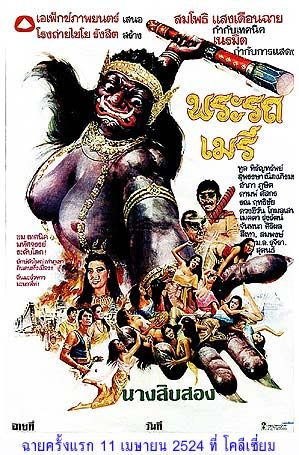
Abb.: Plakat
[Bildquelle: Wikipedia. -- Fair use]
|
"Phra Rod Meree (Thai: พระรถเมรี) is a 1981 Thai fantasy film. Directed by Sompote Sands Sompote Sands (สมโพธิ แสงเดือนฉาย, 1941 - ),[1] it is one of the most successful Thai feature films ever made in Thailand.[2] The story is based on The Twelve Sisters (นางสิบสอง), a Thai folklore myth that originated in one of the Jataka tales (ชาดก).[3] This same story was also adapted into a Thai fantasy lakhon (ละคร ).[4] PlotTwelve girls are abandoned by their parents because they are too poor to take care of them. The twelve daughters are rescued by an ogress (yaksha - ยักษ์) in disguise who promises to take care about them as her own daughters. Phra Rodasan (Phra Rod - พระรถเสน), the only surviving son of the twelve sisters, goes on a quest to the ogre kingdom in order to heal his mother and his aunts' blindness. There he falls in love with the ogress' daughter, Meree (เมรี).[5]2" [Quelle: http://en.wikipedia.org/wiki/Phra_Rod_Meree. -- Zugriff am 2013-03-18] |
1981-04-15
Die Regierung erlaubt den Bau einer Petrochemie-Fabrik in der Provinz Rayong (ระยอง) mit der Bedingung, dass strenge Umweltbestimmungen eingehalten werden.
Abb.: Lage der Provinz Rayong (ระยอง)
[Bildquelle: OpenStreetMap. -- Creative Commons Lizenz (Namensnennung, share alike)]
1981-05-12


Als erstes Mitglied des Königshauses besucht Prinzessin Sirindhorn (มหาจักรีสิรินธร, 1955 - ) die Volksrepublik China (中华人民共和国).
1981-05-27

Mrs. Sujarinee Vivacharawongse (née Yuvadhida Polpraserth) (พระองค์ที่ประสูติแต่ สุจาริณี วิวัชรวงศ์) gebiert dem Kronprinzen Vajiralongkorn einen Sohn: Prinz Vacharaesorn Mahidol (หม่อมเจ้าวัชรเรศร มหิดล)
1981-05-31
Suphat Thirasuphapsakulwong, 37, "heiratet" in Nakhon Pathom (นครปฐม) seine sechste und siebte Frau. Den Zugang in seinem Harem feiert er in einer Party mit 800 Gästen. Seine erste Frau findet besonders nett von ihrem Ehemann, dass er, wenn er ins Bordell geht alle seine Ehefrauen mitnimmt. Sollte der liebevolle Gatte Bedarf nach weiteren Ehefrauen haben, wäre seine erste Frau gerne bereit, das zu arrangieren. Der Gatte hat von seinen ersten sechs Frauen bereits 18 Kinder.
Abb.: Lage von Nakhon Pathom (นครปฐม)
[Bildquelle: OpenStreetMap. -- Creative Commons Lizenz (Namensnennung, share alike)]
1981-06 - 1981-11 ; 1982-03 - 1982 -04
Vierter Nationaler Kongress der Communist Party of Thailand (CPT - พรรคคอมมิวนิสต์แห่งประเทศไทย). Aus Sicherheitsgründen findet der Kongress gestaffelt an verschiedenen Orten statt, und zwar in den Provinzen
- Tak (ตาก)
- Nakhon Phanom (นครพนม)
- Nakhon Si Thammarat (นครศรีธรรมราช)
- Surat Thani (สุราษฎร์ธานี)
- Kunming (昆明, China)
- Chong Chang (ช่องช้าง, Surat Thani): Beschlussfassung (März/April 1982)
Abb.: Lage der genannten Provinzen
[Bildquelle: CIA. -- Public domain]
1981-06
In der Abflughalle des Flughafens Don Muang (ท่าอากาศยานดอนเมือง) sind organisierte Banden tätig, die kurzzeitig unbeaufsichtigtes Gepäck stehlen. Weitere Beschwerden zu diesem Flughafen: der häufige Ausfall der Rolltreppen und Gepäckanlagen, mangelnde Parkplätze.
Abb.: Lage des Flughafens Don Muang (ท่าอากาศยานดอนเมือง)
[Bildquelle: OpenStreetMap. -- Creative Commons Lizenz (Namensnennung, share alike)]s
Abb.: Abflughalle Don Muang (ท่าอากาศยานดอนเมือง), 2009
[Bildquelle: Mattes / Wikipedia. -- Creative Commons Lizenz (Namensnennung, share alike)]
1981-06-06

Erstmals wird AIDS medizinisch beschrieben, ohne aber in seinen Ursachen erkannt zu werden.
Abb.: Aufklärungsposter über die Symptome von AIDS, Thailand, 199x
[Bildquelle: Wellcome Images. -- Creative Commons Lizenz (Namensnennung, keine kommerzielle Nutzung)]
"Twenty years ago, on June 5, 1981, MMWR [Morbidity an mortality report] published a report of five cases of Pneumocystis carinii pneumonia (PCP) among previously healthy young men in Los Angeles (1 ). All of the men were described as “homosexuals”; two had died. Local clinicians and the Epidemic Intelligence Service (EIS) Officer stationed at the Los Angeles County Department of Public Health, prepared the report and submitted it for MMWR publication in early May 1981. Before publication, MMWR editorial staff sent the submission to CDC [Centers for Disease Control an Prevention] experts in parasitic and sexually transmitted diseases. The editorial note that accompanied the published report stated that the case histories suggested a “cellular-immune dysfunction related to a common exposure” and a “disease acquired through sexual contact.” The report prompted additional case reports from New York City, San Francisco, and other cities. At about the same time, CDC’s investigation drug unit, the sole distributor of pentamidine, the therapy for PCP, began to receive requests for the drug from physicians also to treat young men. In June 1981, CDC developed an investigative team to identify risk factors and to develop a case definition for national surveillance. Within 18 months, epidemiologists conducted studies and prepared MMWR reports that identified all of the major risks factors for acquired immnodeficiency syndrome (AIDS). In March 1983, CDC issued recommendations for prevention of sexual, drug-related, and occupational transmission based on these early epidemiologic studies and before the cause of the new, unexplained illness was known." [Quelle: http://www.cdc.gov/mmwr/pdf/wk/mm5021.pdf. -- Zugriff am 2013-01-25]
Zwischen 1984 und 2008 werden in Thailand 1,1 Mio. Menschen mit HIV infiziert, davon sterben 586.000.
1981-06-06
In drei Kaufhäusern Bangkoks explodieren Bomben. 40 Personen werden verletzt. Obwohl sich niemand dazu bekennt, werden die Bomben The Pattani United Liberation Organisation (PULO, องค์กรปลดปล่อยสหปัตตานี - พูโล) zugeschrieben. Ebenso weitere Bombenattentate in Bangkok im Lauf des Jahres.
Abb.: Lage der Provinz Pattani (ปัตตานี)
[Bildquelle: OpenStreetMap. -- Creative Commons Lizenz (Namensnennung, share alike)]
1981-06-07
Suchart Jaesuraparp (สุชาติ แจสุรภาพ, 1951 - ) gewinnt beim Asian Track and Field Championship in Tokyo (Japan) die Goldmedaille im 100-Meter-Lauf.
Abb.: Lage von Tokyo
[Bildquelle: OpenStreetMap. -- Creative Commons Lizenz (Namensnennung, share alike)]
1981-06-07
Tod der Schriftstellerin M.L. Boonlua (Kunjara) Thephayasuwan (หม่อมหลวงบุญเหลือ เทพยสุวรรณ aka. หม่อมหลวงบุญเหลือ กุญช, 1911 - 1981). Sie schrieb u.a. den Roman ทุติยะวิเศษ (Der Tutiyawiset-Orden).
Abb.: M.L. Boonlua (Kunjara) Thephayasuwan (หม่อมหลวงบุญเหลือ เทพยสุวรรณ aka. หม่อมหลวงบุญเหลือ กุญช)
[Bildquelle: th.Wikipedia. -- Fair use]
Abb.: Einbandtitel einer Ausgabe von ทุติยะวิเศษ (Der Tutiyawiset-Orden)
1981-06-07

Tod des Thailand-Archäologen Chester F. Gorman (geb. 1938)
"Chester Gorman (* 11. März 1938 in Oakland; † 7. Juni 1981 in Sacramento) war ein US-amerikanischer Anthropologe und Archäologe. Chester Gorman wuchs auf dem Milchviehbetrieb seiner Eltern in Elk Grove, Kalifornien, auf. Er studierte an der Sacramento State University und später an der Universität von Hawaii in Honolulu, wo er seinen Magisterabschluss absolvierte und promoviert wurde.
Chester Gorman arbeitete hauptsächlich in Südostasien. Zu seinen wichtigsten Ausgrabungstätigkeiten gehörten die Stätten Ban Chiang (บ้านเชียง) im Isaan (อีสาน) und die Phimaen-Höhle (ถ้ำผีแมน) in Nord-Thailand. Die Phimaen-Höhle gehört zu den wichtigsten Fundorten der Hoabinhian-Kultur (Văn hóa Hòa Bình).
Chester Gorman starb am 7. Juni 1981 in Sacramento an Krebs."
[Quelle: http://de.wikipedia.org/wiki/Hoabinhian. -- Zugriff am 2013-04-29]
1981-06-12
Eröffnung des Kaeng Krachan National Park (อุทยานแห่งชาติ แก่งกระจาน)
Abb.: Lage des Kaeng Krachan National Park (อุทยานแห่งชาติ แก่งกระจาน)
[Bildquelle: OpenStreetMap. -- Creative Commons Lizenz (Namensnennung, share alike)]
Abb.: Kaeng Krachan National Park (อุทยานแห่งชาติ แก่งกระจาน), 2005
[Bildquelle: Thai Jasmine. -- http://www.flickr.com/photos/22193699@N04/2198921151/. -- Zugriff am 2012-04-28. -- Creative Commons Lizenz (Namensnennung, keine kommerzielle Nutzung)]
"Der Kaeng Krachan Nationalpark (Thai: อุทยานแห่งชาติ แก่งกระจาน) ist mit einer Fläche von 2915 Quadratkilometern der größte Nationalpark Thailands. Er liegt im Landkreis (Amphoe) Kaeng Krachan (Thai: อำเภอแก่งกระจาน) der Provinz Phetchaburi an der Grenze zu Myanmar. Die Provinz Phetchaburi im südwestlichen Teil der Zentralregion von Thailand. Zusammen mit weiteren Schutzgebieten gehört er zum Western Forest Complex. Der Nationalpark wurde 1981 als 28. Nationalpark des Landes gegründet. Der Park wird von immergrünen oder laubabwerfenden Wäldern dominiert, die 95% der Fläche einnehmen. Die Topographie ist durch Hügelketten und Berge gekennzeichnet, die sich bis zu 1200 Meter über den Meeresspiegel erheben. Die Westgrenze des Parks bildet zugleich die Grenze zu Myanmar, im Osten liegt des Kaeng Krachan Wasserreservoir, das die angrenzende Bevölkerung mit Elektrizität und Wasser versorgt.
Neben überlebensfähigen Beständen von andernorts bedrohten Großtieren wie den Asiatischen Elefant, Kragenbär, Malaienbär, Asiatischen Wildhund, Schabrackentapir, Banteng, Gaur, Leopard, Nebelparder und eine Tiger-Art, kommen zahlreiche weitere Säugetierarten vor, darunter sind der Sambarhirsch, Tenasserim-Muntjak, Kleinkantschil, Serau, Binturong, Schweinsdachs, Malaiisches Schuppentier und Goldschakal erwähnenswert. Unter den Affen findet man den Weißhandgibbon, Bindenlangur, Südliche Brillenlangur, Javaneraffe, Schweinsaffe und Bärenmakak. Zudem bietet der Park zahlreichen seltenen Vogelarten, wie dem Wollhalsstorch, Graukopf-Seeadler (Icthyophaga ichthyaetus), Rotachselpapagei (Psittinus cyanurus) und Malaienuhu (Bubo sumatranus) eine Zuflucht. Um das Kaeng Krachan Wasserreservoir findet man zahlreiche Wasservögel, wie Zwergtaucher, Fischadler, Bacchusreiher und mehrere Eisvogelarten. Insgesamt beherbergt der Park 58 bestätigte Säugetierarten und 355 Vogelarten."
[Quelle: http://de.wikipedia.org/wiki/Nationalpark_Kaeng_Krachan. -- Zugriff am 2012-04-28]
1981-06-12
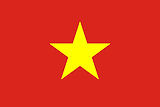
Der Außenminister Vietnams, Nguyen Co Thach (Nguyễn Cơ Thạch, 1921 - 1998), leugnet, dass Thailand irgendein Sicherheitsinteressan an Kambodscha hat. Gleichzeitig verweist er auf die "sechzehn Provinzen von Laos, gegenwärtig unter Thai Verwaltung" (gemeint ist Nordostthailand).
1981-06-15
Feierliche Inbetriebnahme des Srinagarind-Damms (เขื่อนศรีนครินทร์).
Abb.: Lage des Srinagarind-Damms (เขื่อนศรีนครินทร์)
[Bildquelle: OpenStreetMap. -- Creative Commons Lizenz (Namensnennung, share alike)]
Abb.: Srinagarind-Damm (เขื่อนศรีนครินทร์)
[Bildquelle: Lerdsuwa / Wikipedia. -- GNU FDLicense]
"Die Si-Nakharin-Talsperre (Thai: เขื่อนศรีนครินทร, auch: Sri Nagarind Dam oder Srinagarindra Dam) ist die größte Talsperre im westlichen Thailand. Der Staudamm steht im Landkreis (Amphoe) Si Sawat (ศรีสวัสดิ์) in der Provinz Kanchanaburi (กาญจนบุรี). Der Si-Nakharin-Stausee reguliert saisonale Abflussschwankungen, um einen konstanten Abfluss von ungefähr 140 m³/s im Fluss Kwae Yai (แม่น้ำแควใหญ่) zu garantieren. In der trockenen Jahreszeit wird das Wasser zur Bewässerung genutzt. Außerdem werden in einem Wasserkraftwerk jährlich 1160 GWh (oder 1185 GWh) Strom für den Großraum Bangkok erzeugt. Hier befindet sich auch das erste Pumpspeicherkraftwerk Thailands. Das Wasserkraftwerk hat eine Leistungskapazität von 720 MW, davon hat das Pumpspeicherwerk einen Anteil von 360 MW. Der nutzbare Stauraum ist 7.470 Millionen m³ groß, während der gesamte Stauraum 17.745 Mio. m³ umfasst.
Der Stausee (Si Nakharin Lake) liegt im Nationalpark Chaloem Rattanakosin (อุทยานแห่งชาติ เฉลิม รัตนโกสินทร์).
Das Absperrbauwerk der Talsperre ist ein Staudamm aus Steinschüttmaterial.
Der Bau des Staudamms zwang 960 Familien, an das Ostufer des Stausees umzusiedeln. Sie mussten ihr fruchtbares Ackerland am Fluss aufgeben und bekamen als Ersatz raue wilde Grundstücke auf den umliegenden Hügeln.
Der Si-Nakharin-Staudamm wurde in Thailand öffentlich dafür kritisiert, dass er auf der sog. „Sri Sawat (ศรีสวัสดิ์) Fault“ gebaut wurde, einer geologischen Verwerfung, die in der Vergangenheit bereits Erdbeben verursacht hat."
[Quelle: http://de.wikipedia.org/wiki/Si-Nakharin-Talsperre. -- Zugriff am 2011-12-04]
1981-06-29

Hu Yaobang (胡耀邦, 1915 - 1989) wird Vorsitzender der Kommunistischen Partei Chinas (中国共产党).
Abb.: Hu Yaobang (胡耀邦), St.-Romain-au-Mont-d'Or, Rhône-Alpes, Frankreich, 2008
[Bildquelle: thierry ehrmann. -- http://www.flickr.com/photos/home_of_chaos/2489779472/. -- Zugriff am 2013-01-25. -- Creative Commons Lizenz (Namensnennung)]
1981-07
Abwertung des Baht auf 23 Baht pro US$ (bisher 21 Baht).
1981-07/08
"In July 1981, the Thai authorities announced that a 50,000-baht price had been put on Khun Sa's [ခွန်ဆာ / 張奇夫 / จันทร์ จางตระกูล, 1934 - 2007] head.54 The sum was in itself laughable—the equivalent of US$2,000—and Khun Sa himself must also have sniggered at the announcement, as he was staying in Thailand, partly protected by Border Patrol Policemen [ตำรวจตระเวณชายแดน] and other paramilitary units. In August, a new campaign was mounted. The reward was raised to 500,000 baht.55 Leaflets announcing the reward were airdropped in the Ban Hin Taek [บ้านหินแตก] area. To the amusement of many, the leaflets said that the offer was "valid until 30 Sept. 1982""
[Quelle: Lintner, Bertil <1953 - >: Burma in revolt : opium and insurgency since 1948. -- 2. ed. -- Chiang Mai : Silkworm, 1999. -- 558 S. : Ill. ; 23 cm. -- ISBN 974-7100-78-9. -- S. 321f.. -- Fair use]
1981-07-16 - 2003-10-31

Mahathir bin Mohamad (1925 - ) ist Ministerpräsident von Malaysia
Abb.: Mahathir bin Mohamad, 1984
[Bildquelle: Sergant Michael W. Tyler / DoD / Wikimedia. -- Public domain]
1981-07-22

Hajj affairs promotion act B.E. 2524
1981-07-29 11:20 BST

London (Großbritannien): Hochzeit von
His Royal Highness The Prince Charles Philip Arthur George, Prince of Wales and Earl of Chester, Duke of Cornwall, Duke of Rothesay, Earl of Carrick, Baron of Renfrew, Lord of the Isles, Prince and Great Steward of Scotland, Royal Knight Companion of the Most Noble Order of the Garter, Extra Knight of the Most Ancient and Most Noble Order of the Thistle, Knight Grand Cross of the Most Honourable Order of the Bath, Member of the Order of Merit, Knight of the Order of Australia, Companion of the Queen's Service Order, Royal Chief Grand Companion of the Order of Logohu, Member of Her Majesty's Most Honourable Privy Council, Aide-de-Camp to Her Majesty (geb. 1948)
mit
Lady Diana Frances Spencer (1961 - 1997)
Abb.: Charles Philip Arthur George, Prince of Wales, und Lady Diana, Princess of Wales, Duchess of Cornwall, Duchess of Rothesay and Countess of Chester, 1981
[Bildquelle: Barry. -- http://www.flickr.com/photos/ennor/132577248/. -- Zugriff am 2011-12-11. -- Creative Commons Lizenz (Namensnennung, keine kommerzielle Nutzung, share alike)]Thailand ist vertreten durch:
Somdet Phra Theppharatratsuda Chao Fa Maha Chakri Sirindhorn Ratthasimakhunakonpiyachat Sayamborommaratchakumari
สมเด็จพระเทพรัตนราชสุดา เจ้าฟ้ามหาจักรีสิรินธร รัฐสีมาคุณากรปิยชาติ สยามบรมราชกุมารี
1981-07-30
Die Armee hebt ein Lager von über 5.500 Claymore-Antipersonenminen, Dynamit, Sprengfallen und chirurgischen Geräten der kommunistischen Guerillas aus.
Abb.: Claymore-Antipersonenmine
[Bildquelle: U. S. Army / Wikimedia. -- Public domain]
"Die M18A1 Claymore-Antipersonenmine, meist nur kurz als Claymore bezeichnet, ist eine während des Koreakrieges entwickelte Richtmine, also eine Landmine, deren Explosionswirkung in eine bestimmte Richtung relativ zur Sprengladung konzentriert wird. Ihr Entwickler Norman A. MacLeod gab ihr den Namen nach dem schottischen Claymore-Schwert. Die Claymore basiert ursprünglich auf einer deutschen Schützenabwehrmine des Zweiten Weltkrieges und wird seit 1963 bei der US Army eingesetzt. Sie ist heute noch immer im Einsatz. In den Spitzenzeiten wurden während des Vietnamkriegs bis zu 80.000 Claymores pro Monat produziert.
[...]
Im Vietnamkrieg wurde die Mine von der United States Army, die allerdings selbst auch ein Drittel ihrer Opfer auf Minen zurückführen musste, häufig eingesetzt. Ein Großteil dieser US-Minen wurde von gegnerischen Soldaten entdeckt und für eigene Zwecke eingesetzt.
[...]
Die Claymore wurde in den Jahren 1969 bis 1992 von den USA in 28 Länder exportiert. In der Zwischenzeit wurden Kopien der Mine von verschiedenen Ländern, unter anderem Südkorea, hergestellt, die wiederum in andere Länder verkauft wurden."
[Quelle: http://de.wikipedia.org/wiki/M18_Claymore. -- Zugriff am 2011-12-04]
"Eine Sprengfalle, auch versteckte Ladung, (englisch: booby trap) ist „eine Vorrichtung oder einen Stoff, der dafür bestimmt, gebaut oder eingerichtet ist, zu töten oder zu verletzen, und der unerwartet in Tätigkeit tritt, wenn eine Person einen scheinbar harmlosen Gegenstand aus seiner Lage bringt oder sich ihm nähert oder eine scheinbar ungefährliche Handlung vornimmt“ (Definition laut Bundesgesetzblatt).[1] Nicht-industriell hergestellte Sprengfallen bezeichnet man als Unkonventionelle Spreng- oder Brandvorrichtung (USBV) engl. auch IED für "Improvised Explosive Device". Nicht gezündete Sprengfallen werden engl. als UXO Unexploded Ordnance bezeichnet. Taktisches Zeichen - Kreis mit aufgesetzter Spitze."
[Quelle: http://de.wikipedia.org/wiki/Sprengfalle. -- Zugriff am 2011-12-04]
1981-08-05
Dr. Prawase Wasi (ประเวศ วะสี, 1931 - ) erhält in Manila den Magsaysay Award for Government Service.
Abb.: ®Ramon Magsaysay Award
[Bildquelle: Wikipedia. -- Fair use]
Abb.: Lage von Manila
[Bildquelle: OpenStreetMap. -- Creative Commons Lizenz (Namensnennung, share alike)]
Abb.: Dr. Prawase Wasi (ประเวศ วะสี)
[Bildquelle: http://www.rmaf.org.ph/madc/items/show/1691. -- Zugriff am 2011-12-04. -- Fair use]
"During the seven and a half centuries since the Thai peoples migrated from the north they were periodically decimated by cholera, plague and smallpox epidemics following floods in the productive central plain; malaria, yaws, gastroenteritis and intestinal parasites were endemic. Christian missionaries and doctors from the Rockefeller Foundation bringing modern medicine to the kingdom had to overcome superstition among the elite and ignorance among commoners—who drank from the same canals where they bathed and dumped refuse. Thereafter medical schools and clinical practice steadily improved and in the 1930s the new constitutional government regulated markets, abattoirs and crematoria, and instituted standards for licensing and training pharmacists and physicians. The kingdom today has an increasing number of distinguished medical doctors.
Thailand, however, shares with her South and Southeast Asian neighbors the continuing problem of trained doctors and good hospitals concentrating in the capital and other major cities. Like medical practitioners elsewhere, many doctors tend to treat their profession as a business and even a government-salaried physician assigned upcountry usually attends most readily to his social peers.
Dr. PRAWASE WASI, in his rise from poor farmer's son to university professor, has shown that the medical profession offers an opportunity to serve others and one's country consequentially. Born 50 years ago at Kanchanaburi in the Khwae River Valley near Burma, PRAWASE saw as a boy that the rich could do something about their lives while the poor were helpless, and he vowed to aid them. He worked his way through school and received the gold medal for the highest academic achievement in his class at the government Faculty of Medicine, Siriraj Hospital, University of Medical Sciences, from which he graduated in 1955. After three and a half years of advanced study in hematology at the University of Colorado, and in human genetics at London University, he returned in 1961 to join the Faculty of Medicine, Siriraj Hospital, in the newly named Mahidol University of which he is Vice Rector for Planning and Development.
Dr. PRAWASE is one of the world's leading hematologists, most notably identifying the genetic mechanism of alpha thalassemia, a blood disease prevalent among Thais and other Southeast Asian and Mediterranean peoples. He has published more than 100 articles in scientific journals, and scientists come from around the world to work with him.
Equally public-health oriented, he edited Handbook for Health of the People to which he and 10 prominent physicians, pharmacists and public health doctors contributed practical advice for rural and urban families. His Household Doctor is a compilation of his answers to medical questions published in a popular magazine. He is also editor and publisher of the monthly Folk Doctor magazine. Ever concerned that medical services should meet the needs of all, he campaigned against official plans to build four 1,000-bed hospitals rather than a number of simple clinics within the reach of villagers. He won provision for a hospital in every district in the current five-year national health plan, and helped organize training for village headmen and Buddhist monks in primary health care.
Withal Dr. PRAWASE's greatest contribution is his inspired teaching. To his medical students he advocates: "go where the problems of health are most urgent; among the poor mostly in rural villages." His focus upon community health—along with heightened social awareness among students and concern with rural problems gradually being shown by other teachers—has resulted in an increasing number of medical graduates making careers in the rural areas.
Gentle in manner and modest in lifestyle, as is his physician wife, he has become the model of the dedicated medical practitioner whose goal is service.
In electing PRAWASE WASI to receive the 1981 Ramon Magsaysay Award for Government Service, the board of trustees recognizes his research contributions to medical science while prompting his profession to make modern health care available to the poor."
[Quelle: http://www.rmaf.org.ph/madc/archive/files/citation_ce82b4d1ce.pdf. -- Zugriff am 2011-12-04]
1981-08-09
In einer Nachwahl in Roi Et (ร้อยเอ็ด) wird der frühere Armeechef und Ministerpräsident General Kriangsak Chomanan (พลเอก เกรียงศักดิ์ ชมะนันทน์, 1917 – 2003) ins Parlament gewählt. Er ist der erste frühere Armeechef, der auf dem Weg der Wahl in die Politik eintritt. Um gewählt werden zu können, hatte er die Chart Prachathipatai (พรรคชาติประชาธิปไตย, National Democratic Party) gegründet.
"In August the following year, Kriangsak used a bitterly fought by-election in Thailand's northeastern Roi-et province to stage a comeback as head of a newly formed political party, the National Democratic Party, which was emerging as the only real alternative to Prem. But given the political stature of Prem's backers—who included the palace—Kriangsak fell short of challenging effectively the new leadership. But Kriangsak's old allies had not forgotten him: Gen. Li Wenhuan and Khun Sa each secretly contributed US$50,000 to his election campaign in Roi-et." [Quelle: Lintner, Bertil <1953 - >: Burma in revolt : opium and insurgency since 1948. -- 2. ed. -- Chiang Mai : Silkworm, 1999. -- 558 S. : Ill. ; 23 cm. -- ISBN 974-7100-78-9. -- S. 319. -- Fair use]
Abb.: Lage von Roi Et (ร้อยเอ็ด)
[Bildquelle: OpenStreetMap. -- Creative Commons Lizenz (Namensnennung, share alike)]
Abb.: Kriangsak Chomanan (พลเอก เกรียงศักดิ์ ชมะนันทน์), 1979
[Bildquelle: Karl H. Schumacher / Wikimedia. -- Public domain]
1981-08-26 - 1982-09-30
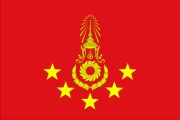
General Prayut Jarumanee (พลเอก ประยุทธ จารุมณี, 1922 - ) ist Commander-in-Chief of the Royal Thai Army (ผู้บัญชาการทหารบก).
Abb.: Prayut Jarumanee (พลเอก ประยุทธ จารุมณี)
[Bildquelle: th.Wikipedia. -- Fair use]
1981-09-04 - 1981-09-13

Internationale Funkausstellung in Berlin: die Compact Disc (CD) für Musik wird erstmals vorgestellt.
Abb.: CD, Rasterelektronenmikroskop-Aufnahme
[Bildquelle: Wikimedia. -- Public domain]
1981-09-08 - 1997

ประเสริฐ มะหะหมัด (มูฮัมหมัด บิน ซอและห์, 1927 - 1997) ist Chularajamontri (จุฬาราชมนตรี)
Abb.: ประเสริฐ มะหะหมัด (มูฮัมหมัด บิน ซอและห์)
[Bildquelle: th. Wikipedia]
1981-09-12
Erstmals wird thailändisches Erdgas zur Elektrizitätsgewinnung verwendet. Das Erdgas stammt aus den Erawan Fields, wird über eine 425 km lange Pipeline nach Rayong geleitet, dort wird es raffiniert und komprimiert und dann nach Bangkok geschickt, wo die South Bangkok Power Plant es zur Stromerzeugung verwendet.
Abb.: Gas- und Erdölvorkommen im Golf von Thailand
[Bildquelle: http://www.ccop.or.th/epf/thailand/thailand_petroleum.html. -- Zugriff am 2011-12-04. -- Fair use]
1981-09-27
Feierliche Eröffnung des Bang Lang Staudamms (เขื่อนบางลาง) am Fluss Pattani in der Provinz Yala. Er dient der Bewässerung, der Verhinderung von Überschwemmungen und der Stromerzeugung.
Abb.: Lage des Bang Lang Staudamms (เขื่อนบางลาง)
[Bildquelle: OpenStreetMap. -- Creative Commons Lizenz (Namensnennung, share alike)]
Abb.: Lage des Bang Lang Staudamms (เขื่อนบางลาง)
[Bildquelle: OpenStreetMap. -- Creative Commons Lizenz (Namensnennung, share alike)]
1981-09-24
The Port Authority of Thailand (PAT, การท่าเรือแห่งประเทศไทย) befiehlt, dass die 1.200 Bewohner des Slums Khlong Toey (คลองเตย) diesen räumen, damit der Hafen erweitert werden kann. Unter den von der Räumung Betroffenen ist auch Prateep Ungsongtham (Hata) (ประทีป อึ้งทรงธรรม ฮาตะ, 1952 - ), die Preisträgerin des Magsaysay Award for Public Service 1978. The National Housing Authority (การเคหะแห่งชาติ) bietet den Slumbewohnern Land in der Provinz Samut Prakan (สมุทรปราการ) an. Die Slumbewohner beklagen sich aber, da sie ihren Lebensunterhalt verlieren.
Abb.: Lage von Khlong Toey (คลองเตย)
[Bildquelle: OpenStreetMap. -- Creative Commons Lizenz (Namensnennung, share alike)]
Abb.: Klong Toey (คลองเตย), 2007
[Bildquelle: Mattes / Wikipedia. -- Public domain]
1981-10

Eine Einheit der Thahan Phran (ทหารพราน, Rangers) versucht erfolglos, den Drogenkönig Khun Sa (ခွန်ဆာ ; 張奇夫 ; จันทร์ จางตระกูล ; 1934 - 2007) zu ermorden.
"It all seemed like just another theatrical show—until fighting broke out in the Ban Hin Taek [บ้านหินแตก] area in October. A thirty-nine-man assassination squad had trekked from the border town of Mae Sai [แม่สาย], into Burma, and attacked what they thought was Khun Sa's [ခွန်ဆာ / 張奇夫 / จันทร์ จางตระกูล, 1934 - 2007] residence from the rear.57 As the commandos had come from the Burmese side of the frontier, Khun Sa's troops apparently believed that the attackers were either Burmese government troops or CPB [Communist Party of Burma / ဗမာပြည်ကွန်မြူနစ်ပါတီ] forces. They returned fire, and almost the entire unit was wiped out.
Abb.: Lage von Ban Hin Taek [บ้านหินแตก] und Mae Sai [แม่สาย]
[Bildquelle: OpenStreetMap. -- Creative Commons Lizenz (Namensnennung, share alike)]It was only when they searched the dead bodies that the mystery was resolved. The troops were all dressed in uniforms bearing the insignia "TIA", which stood for the Tai Independence Army. The TIA had been set up some years before by a Shan princeling, Priwat Kasemsri, who dreamt of unifying all the Tai peoples in the region.
The attempt never got off the ground, but some remnants of the TIA remained as border bandits in the hills near Tachilek [တာချီလိတ်မြို့]. Others were recruited into the Thai paramilitary forces, which had a special training camp at Pakthongchai [ปักธงชัย] near Nakorn Ratchasima [นครราชสีมา] in the northeast. The Pakthongchai training facility was an off-shoot of Col. Sutsai Hasdin's [สุดสาย หัสดิน] activities in the 1970s, and the vast majority of the paramilitary forces there were either hill tribes from northern Thailand, or Pa-O, Karen, Shan, Lahu and Wa mercenaries from Burma.
Abb.: Lage von Pakthongchai [ปักธงชัย]
[Bildquelle: OpenStreetMap. -- Creative Commons Lizenz (Namensnennung, share alike)]Discovering that he had killed a number of commandos under the command of the Thais, Khun Sa was alarmed. In Chiang Mai [เชียงใหม่] at the time there were also persistent rumours—vigorously denied by the US consulate in town—that a Caucasian had led the attack, and died in the ensuing gun battle.58 Whether true or not, the writing was on the wall: the Americans meant business. They were putting pressure on the Thais to do something about Khun Sa's blatant presence on Thai soil."
[Quelle: Lintner, Bertil <1953 - >: Burma in revolt : opium and insurgency since 1948. -- 2. ed. -- Chiang Mai : Silkworm, 1999. -- 558 S. : Ill. ; 23 cm. -- ISBN 974-7100-78-9. -- S. 322. -- Fair use]
Abb.: Khun Sa (ခွန်ဆာ ; 張奇夫 ; จันทร์ จางตระกูล)
[Bildquelle: Satharn Pairaoh / Wikipedia. -- GNU FDLicense]
1981-10

Viele südthailändische Muslime lehnen das vom Chularajamontri (จุฬาราชมนตรี) festgelegt Datum für das Opferfest Eid-al-Adha (عيد الأضحى) ab und feiern das Fest einen Tag vor dem offiziellen Datum.
1981-10 - 1993-12

Die Bundesrepublik Deutschland fördert den Ausbau der Faculty of Engineering des King Mongkut’s Institute of Technology (KMITNB, สถาบันเทคโนโลยีพระจอมเกล้าเจ้าคุณทหารลาดกระบัง)
1981-10-01 - 1985-06-06

John Gunther Dean (1926 - ) ist US-Botschafter in Thailand.
1981-10-06
Die Regierung kündigt an, Bangkok zu einer grünen Stadt machen zu wollen. Der Bau von Stadtautobahnen und die Zerstörung von Bäumen und Grünflächen geht aber fröhlich weiter.
1981-10-07

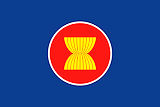
Gründung der Deutsch-ASEAN Parlamentariergruppe.
1981-10-14

Senator Chamlong Srimuang (จำลอง ศรีเมือง, 1935 - ) und Abgeordneter (Chat Thai Partei - พรรคชาติไทย) Siri Thungthong (ศิริ ทุ่งทอง) sowie ein Dutzend weitere scheren ihr Haupt kahl aus Protest gegen das reformierte Abtreibungsgesetz, das 1980 im Parlament angenommen worden war, und nun an den Senat geht. Die Abtreibungsgegner gewinnen die Unterstützung des Sangharaja (สังฆราช), Ariyavangsagatayana (สมเด็จพระอริยวงศาคตญาณ สมเด็จพระสังฆราช สกลมหาสังฆปริณายก -วาสน์ วาสโน, 1897 - 1988).
Abb.: Karikatur in The Nation: Chamlong als Storch, der die Ungeborenen schützt
[Bildquelle: Whittaker, Andrea <1967 - >: Abortion, sin, and the state in Thailand. -- London : RoutledgeCurzon, 2004. -- 189 S. : Ill. ; 25 cm. -- ISBN 041533652X´. -- S. 47]
Abb.: Karikatur in The Nation: Chamlong versucht die Zündschnur vor dem Geschütz aufzuhhalten, das ungeborenes Leben zu zu zerstören droht
[Bildquelle: Whittaker, Andrea <1967 - >: Abortion, sin, and the state in Thailand. -- London : RoutledgeCurzon, 2004. -- 189 S. : Ill. ; 25 cm. -- ISBN 041533652X´. -- S. 50]
1981-10-16
Die Thailändische Fußballnationalmannschaft der Frauen (ฟุตบอลหญิงทีมชาติไทย) bestreitet ihr erstes Länderspiel. Sie verliert gegen Taiwan 0 : 2.
Abb.: ®Logo
[Bildquelle: Wikipedia]
1981-10-21
Col Chamlong Srimuang (จำลอง ศรีเมือง, 1935 - ), Generalsekretär von Ministerpräsident Prem, tritt zurück. Als Grund gibt er an, dass er damit gegen das Gesetz protestiere, das Abtreibung legalisiert. Abtreibung sei mit seinem Gewissen als Buddhist nicht vereinbar. Das Gesetz war vom Parlament mit 79 Stimmen angenommen worden, bei 3 Neinstimmen und 219 Enthaltungen. Politische Beobachter sagen, dass Chamlong in seiner Loyalität gespalten ist zwischen Prem und den "Jungtürken" des "April Foul's Coup".
Abb.: Chamlong Srimuang (จำลอง ศรีเมือง), 2006
[Bildquelle: IRRI. -- http://www.flickr.com/photos/ricephotos/3485176009/. -- Zugriff am 2011-12-04. -- Creative Commons Lizenz (Namensnennung)]
1981-10-23 - 1985-03-28
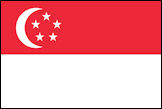
C.V. Devan Nair (ദേവന് നായര് / சி.வி தேவன் நாயர் / 琴加拉·维蒂尔·德万·奈尔, 1923 - 2005) ist Präsident Singapurs.
1981-10-24
Interreligiöses Seminar gegen eine Reform des Abtreibungsrechts
Abb.: สภาเมึองมันุษ์ - Menschliche politische Versammlung (man stimmt für Freigabe der Abtreibung) -- Karikatur aus dem Kongressbericht, 1981
[Bildquelle: Whittaker, Andrea <1967 - >: Abortion, sin, and the state in Thailand. -- London : RoutledgeCurzon, 2004. -- 189 S. : Ill. ; 25 cm. -- ISBN 041533652X. -- S. 81]Yaowadi Rakwiriya, die Vorsitzende des Seminars:
"Yaowadi Rakwiriya, chairperson for the seminar, suggests that ‘On the one hand democracy is important, but then on the other hand we must see whether this democracy works or not’.
She illustrates her argument through an example,
if there were five criminals and one monk participating in a democratic vote taken to decide on whether to go ahead and commit a robbery, the monk would surely lose. The point is that the law of Dharma and righteousness is superior to democracy."
[Quelle: Whittaker, Andrea <1967 - >: Abortion, sin, and the state in Thailand. -- London : RoutledgeCurzon, 2004. -- 189 S. : Ill. ; 25 cm. -- ISBN 041533652X. -- S. 80]

Phra Bodhirak (โพธิรักษ์, 1934 - ), Gründer von Santi Asoke (สันติอโศก), auf diesem Seminar
"Thailand is rich and plentiful, Thailand is a clever country, we have culture, we have industry, we have all sorts of things so many I can't mention here. We in Thailand don’t need to copy from other countries. If we do, if we fall for the ideas of other countries Thailand will become progressively worse and worse." "Do you want a culture like that in Scandinavia, do you want Western culture with its free sex? The member of the Thai academy Chamnong Thongprasoet says that Thailand has a great many prostitutes while Scandinavia doesn't have any...That is because Scandinavia only has prostitutes because they practice free sex [and hence are all prostitutes]. There are no virgins over there so why do you need to have prostitutes then? Does Thailand want that sort of culture?"
[Übersetzt in: Whittaker, Andrea <1967 - >: Abortion, sin, and the state in Thailand. -- London : RoutledgeCurzon, 2004. -- 189 S. : Ill. ; 25 cm. -- ISBN 041533652X. -- S. 76ff.]

Der katholische Priester John Uliana auf diesem Seminar:
"The institutions of the country are ‘the nation, religion and the King’. Religion is an institution of the country therefore to bring out a law that is against religion, is contrary to the constitution... I would add that this law on abortion is an insult to the King. This is because the King proclaims to rule over the kingdom in a just manner. An unjust law does nothing but show contempt to the King. [...]
Finally when there is no more religion the monarchy will be finished since the throne is rooted in religion, injustice. If we have no justice [tham] [ธรรม
] why would we wai [ไหว้] [show respect to] the King? And as for the country, the nation would be finished as well."[Übersetzt in: Whittaker, Andrea <1967 - >: Abortion, sin, and the state in Thailand. -- London : RoutledgeCurzon, 2004. -- 189 S. : Ill. ; 25 cm. -- ISBN 041533652X. -- S. 77]
1981-10-29
Eröffnung der Mautstraße Din Daeng-Port Expressway (zwischen dem Hafen Klong Toey - คลองเตย - und Din Daeng - ดินแดง). Der Bau dauerte 8 Jahre und kostete 1,6 Milliarden Baht.
Abb.: Verlauf des Expressway-Abschnitts Din Daeng - Klong Toey (ดินแดง - คลองเตย) (rot)
[Bildquelle: OpenStreetMap. -- Creative Commons Lizenz (Namensnennung, share alike)]
Abb.: Abschnitt des Din Daeng - Klong Toey Expressway (ดินแดง - คลองเตย)
[Bildquelle: ©Google earth. -- Zugriff am 2011-12-04]
1981-11
In der Provinz Phattalung (พัทลุง) wird eine Kompanie Thahan Phran (ทหารพราน, Rangers) aufgelöst, da sie Dorfbewohner misshandelt hatte.
Abb.: Lage der Provinz Phattalung (พัทลุง)
[Bildquelle: OpenStreetMap. -- Creative Commons Lizenz (Namensnennung, share alike)]
1981-11-06
Innenminister Gen Sitthi Jirarote (พลเอก สิทธิ จิรโรจน์, 1920 - 2010) erklärt dem Laster, dem Glücksspiel und anderen illegalen Tätigkeiten den Krieg. Er gibt der Polizei einen Monat Zeit, um die Kriminalitätsrate zu senken und illegales Glücksspiel auszurotten. Innerhalb zwei Wochen weist die Polizei folgende Erfolgsbilanz aus:
182 Erwachsene und 60 Jugendliche verhaftet wegen illegaler Wetten
1678 Betreiber illegaler Lotterien, Subunternehmer solcher Betreiber und Lotteriespieler verhaftet
Zeitlich begrenztes Erscheinungsverbot für fünf Tageszeitungen und ein Wochenmagazin wegen Irreführung der Öffentlichkeit durch falsche Lotterie-Tipps
Konfiskation von 3140 obszönen Büchern und Zeitschriften bei Verkäufern in Bangkok
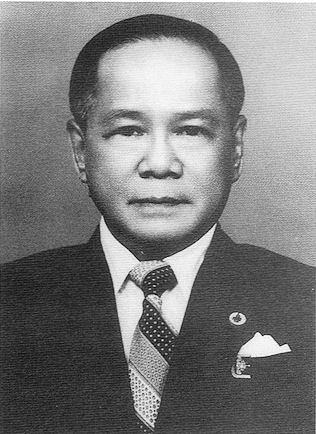
Abb.: Sitthi Jirarote (สิทธิ จิรโรจน์)
[Bildquelle: th.Wikipedia. -- Fair use]
1981-11-10 - 1981-11-11


Die Königin ist in den USA. Die Organisation Save the Children verleiht ihr den Distinguished Service Award für ihre außerordentlichen Bemühungen, südostasiatischen Flüchtlingen zu helfen. UNO-Generalsekretär Kurt Waldheim gibt ein Festessen zu Ehren der Königin. Die Tour der Königin wird von der Thai-Regierung bezahlt als Werbetour für Thai-Handarbeiten.
1981-12 - 1984(?)


Die Bundesrepublik Deutschland fördert mit 750.000 DM die Restaurierung der Wandmalereien in Wat Suthat (วัดสุทัศน เทพวราราม ราชวรมหาวิหาร, Bangkok). Die Restaurierung wird von 70 thailändischen Restauratoren vorgenommen.
Abb.: Lage von Wat Suthat (วัดสุทัศน เทพวราราม ราชวรมหาวิหาร)
[Bildquelle: OpenStreetMap. -- Creative Commons Lizenz (Namensnennung, share alike)]
Abb.: Malerei in Wat Suthat (วัดสุทัศน เทพวราราม ราชวรมหาวิหาร)
[Bildquelle: Heinrich Damm / Wikimedia. -- GNU FDlicense]
1981-12-18 - 1981-12-22
"On December 18, 1981, The National Review (Bangkok) reported on page 3 of their local news that Police Lieutenant Chaovarin Latthasaksiri has been appointed "by lawmakers of all political parties" to submit an urgent motion to the House of Representatives to set up a commission to probe into the activities of Samnak Pu Sawan [สำนักปู่สวรรค์] and Samnak Hoopa Sawan which were described as "two controversial semi-religious schools in Ratchaburi [ราชบุรี]." The schools were accused "of being involved in scandalous rituals," "curing illness through superstitious means," and "using religion for personal gains." It was also demanded to find out whether the schools’ activities were a threat to national security. Suchart Kosolkittwong [สุชาติ โกศลกิติวงศ์ aka. Ariyavamso Bhikkhu - อริยวังโสภิกขุ, 1943 - 2005] had allegedly proclaimed himself to be the president of the World Religious Relations Organization which is affiliated to the United Nations. Thai envoys had helped Khun Suchart to meet UN Secretary General Kurt Waldheim [1918 - 2007]. When he sought support from international organizations, no officials hesitated to defend Khun Suchart. On December 22, 1981, Khun Suchart’s name appeared again in the local news of The National Review. Members of the so-called "Chanuan (Igniter) Movement," [ชนวน] led by the well-known Buddhist monk Phra Anant Senakhan [อนันต์ เสนาขันธ์], registered a series of charges with the Ratchaburi police on December 21, 1981. Phra Anant, a former police activist, had been dismissed from police service after having been found guilty for inciting policemen to storm the residence of former Premier M.R. Kukrit Pramoj [คึกฤทธิ์ ปราโมช, 1911 - 1995] in 1976. Located in Soi Aree [ซอยอารีย์] off Paholyothin Road [ถนนพหลโยธิน], the Chanuan Movement had been active in waging a campaign against corruption among government officials from 1974 to 1976. They published a controversial magazine called Chanuan [ชนวน] which listed the name of individuals they found corrupt. Phra Anant, who had held the rank of police major before he was dismissed from government services, had already earlier registered a charge against 'Suchart because the latter had accused the Chanuan Movement of being communist oriented.
On December 21, 1981, the Minister of Interior, General Sitthi Chirarochana [สิทธิ จิรโรจน์, 1924 - 2010], declared that legal action may be taken against Samnak Hoopa Sawan for "making grim predictions about the future of Thailand." In a book, The Doomsday of Thailand, it had been said that Thailand will soon be occupied by communists. The publisher of the book was sentenced to six months in jail and all copies of the book were confiscated. The licenses of the Religious Relations Association and the Jinnaputo Memorial Foundation were revoked by the National Committee on Culture (ONCC). The schools were searched for weapons and a warrant was issued for the arrest of Khun Suchart.
Other allegations mentioned Khun Suchart writing a letter to the king in which he urged him to abdicate. It was said that on July 19, 1981, Suchart had proclaimed himself to be the second king. Confusion arose about the Hoopa Sawan Center being an independent state with a peace ambassador and an Islamic monument which had been erected in conflict with Islamic principles."
[Quelle: Heinze, Ruth-Inge <1919 - 2007>: Trance and healing in Southeast Asia today. -- Bangkok, Thailand : White Lotus, 1988. -- 406 S. : Ill. ; 22 cm. -- ISBN 974-8495-18-3. -- S. 276f.]
1981-12-19
Der Senat lehnt mit 141 Nein, 1 Ja und 83 Abwesenden das reformierte Abtreibungsgesetz ab. Damit bleibt das strenge Verbot von Abtreibungen von 1957 in Kraft.
1981-12-25

Tod von Luang Po Tae (หลวงพ่อเต๋ คงคสุวัณโณ, geb. 1891), Wat Sam Ngam (วัดสามง่าม), Provinz Nakhon Pathom (นครปฐม)
)
Abb.: Luang Po Tae (หลวงพ่อเต๋ คงคสุวัณโณ)
Abb.: Lage von Wat Sam Ngam (วัดสามง่าม)
[Bildquelle: OpenStreetMap. -- Creative Commons Lizenz (Namensnennung, share alike)]
1981-12-27
Das National Security Council kündigt eine Kampagne an, den Opiumanbau bei Bergvölkern zu unterbinden. Teile der Kampagne sind:
Strafverfolgung der Verkäufer von Schlafmohnsamen
Alternative Lebensgrundlagen für die Bergvölker (gratis Saatgut anderer Nutzpflanzen)
Versorgung mit Reis
Belehrung der Leute über die Notwendigkeit, Opiumanbau und Opiumrauchen zu unterlassen
Rehabilitation von Opiumsüchtigen
Abb.: Schlafmohn, Nordthailand, 2006
[Bildquelle: Dion Crannitch. -- http://www.flickr.com/photos/dionc/100321602/. -- Zugriff am 2011-12-04. -- Creative Commons Lizenz (Namensennung, keine kommerzielle Nutzung, share alike)]
1981-12-27
Um Geld zu sammeln für Flutopfer in Südthailand singt Ministerpräsident Prem in einer Wohltätigkeitsshow des Fernsehen den Song "Only one in my heart" (หนึ่งในดวงใจ).
พี่นี้มีน้องหนึ่งในดวงใจ เท่านั้น
หญิงอื่นหมื่นพันจะมาเทียมทัน ที่ไหน
แต่รักของพี่ซ่อนอยู่กลางใจ ข้างใน
หนึ่งในดวงใจคือเธอคนเดียว แท้เทียวI have only you in my heart
Other ten thousand women can't compare to you
But my love hides in the inner heart
The only one in my heart is you, trulyErste Strophe des Songs. -- Fair Use Der Song (anderer Sänger) auf Spotify:
URI: spotify:track:0thDcYRxt9DTezi52b4Md9
URL: https://open.spotify.com/track/0thDcYRxt9DTezi52b4Md9
ausführlich: http://www.payer.de/thailandchronik/ressourcen.htm
Zu Chronik 1982